Focus on what moves you!
Soft Tissue Therapy is an essential part of an effective training program, especially if performance is important to the athlete. It’s not new either. Soft tissue therapy has been around for a long time in various forms including massage. However, it’s largely over looked by modern athletes and the general public, which is why this article will explain the fundamental how’s and why’s of soft tissue therapy.
This article will:
Outline the physiology of our Soft Tissue
Explain how our Soft Tissue functions and malfunctions
Provide effective principals and techniques to use in your Soft Tissue Therapy
Soft Tissue Therapy is an essential component of an effective training program that will help athletes prevent injuries, recovery faster, optimize movement patterns or performance in a given sport or activity.
Goals of Soft Tissue Therapy are:
• Optimize function of the Soft Tissue by restoring its length, responsiveness and softness.
• Eliminate Knots, Adhesions and the build up of Scar Tissue in the Soft Tissue that will create compensation strategies in movement patterns and increase the risk of injury.
• Improve Blood Flow and Circulation of Nutrients that will aid cellular repair and help athletes fully recovery.
Defining Soft Tissue
Soft tissue is everything under your skin except for your bones and organs; this includes muscles, tendons, ligaments, fascia, nerves connections, proprioceptors, arteries, veins, capillaries and fat. The soft tissue acts as an intricate network of pulleys that holds the body together and creates Human Movement.
The Essential Physiology
In regards to performance, these are the most essential physiological structures that make up our soft tissue:
‘Functional’ Structures-
Muscle Fibers
Tendons
Ligaments
Fascia
‘Disruptive’ Structures-
Knots (Myofascial Trigger Points)
Adhesions
Scar Tissue
The ‘functional’ structures of our soft tissue produce and coordinate all Human Movement. While the ‘disruptive’ structures biomechanically limit or restrict how the body cam move and eventually create different strategies of compensation strategies in Human Movement. However, it’s important to note that these ‘disruptive’ structures also have specific roles that help protect and heal the soft tissue.
Brief Description of Soft Tissue Physiology:
Tendons attach muscle to bone and ligaments connect bone to bone while fascia is a large web that wraps around everything helps holds the soft tissue together. Collectively, muscles, tendons, fascia and ligaments act as pulleys or puppet strings that make our bodies move. On the other hand, knots, adhesions and scar tissue form inside the soft tissue and intentionally limit or restrict the ways in which our bodies can move. Knots, adhesions and scar tissue exist for very good reasons though as they are active components in the soft tissue’s natural healing process. Knots, adhesions and scar tissue will bond damaged soft tissue cells to other cells in order to prevent further damage. Unfortunately, these knots, adhesions and the formation of scar tissue will disrupt the biomechanics of the body, which will create different strategies of compensation strategies in Human Movement and eventually lead to injury.
Soft tissue therapy is an effective way to eliminate knots, adhesions and scar tissue in order to restore biomechanics, optimize movement and improve performance.
Now, it’s time to examine and understand how our soft tissue works. Here is a diagram illustrating the most notable soft tissue structures and how they attach to our bones.
Physiology: This diagram depicts the tendon connecting the muscle to the bone as well as the interior design of a muscle that reveals millions of microscopic muscle fibers that are bundled together by fascia.
Muscle Fibers
There are close to 650 muscles in the body that incorporate billions of microscopic muscles fibers and sarcomeres, which are small enough to fit on the top of a pin. Commonly, our muscle fibers have been thought to be the ‘motor’ to our movement. However, the real motor to movement lies deeper within the muscle fibers and sarcomeres.
Actin and Myosin
In each muscle fiber there are smaller units of ‘sarcomeres’ that have an army ‘little arms and hooks’ are called Actin and Myosin. These Actin and Myosin are the actual motor of the muscle as they literally hook and pull on each other to contract and shorten the muscle in order to create Human Movement. Consequentially, these Actin and Myosin are not very individually strong as they are only microscopic in size. However, when millions of muscle fibers trigger billions of Actin and Myosin then real strength emerges and it is possible that an athlete can squat over 1,000 lbs because of a series of microscopic actions in the soft tissue.
Here is a diagram of the inside of a Muscle Fiber-
This diagram shows the rows of Actin and Myosin that fill up the inside of a sarcomere and pull on one another to cause a contraction.
Here is an illustration of Actin and Myosin-
This illustration depicts the ‘arm and hook’ mechanics of the Actin and Myosin that exist inside the soft tissue.
Soft Tissue Striations
The soft tissue aligns in rows of striations throughout the entire body. Each striation contains health of fascia wrapped around a thread of muscle fibers run parallel with the pull of the Actin and Myosin. These soft tissue striations align muscle fibers and sarcomeres together end-to-end much like train cars connect to one another on the railroad tracks. The striations in the soft tissue dictate the direction in which force will be applied onto the bone to create Human Movement.
Many soft tissue therapy techniques apply pressure in various directions based on these striations.
This illustration shows how muscles are made of bundles of muscle fibers that house numerous Sarcomeres where the Actin and Myosin are located.
Here are illustrations of the Striation in the Soft Tissue-
The soft tissue is aligned in striations, which follow the pull of force in each muscle contraction. Knowing how the soft tissue is striated helps make soft tissue therapy techniques more effective.
Tendons
Every striation in the soft tissue eventually merges into a tendon and connects to a bone. Tendons tend to be overlooked when it comes to training. Yet, these semi-elastic bands of collagen fibers play an important role in our movement for two main reasons.
• Tendons store kinetic energy for reflexive actions and explosive movements as seen in plyometrics, weightlifting and sports.
• Tendons have important proprioceptors or sensory nerves that help the body coordinate refined movements, initiate reflexives and maintain balance.
Danger
Overuse or a lack of recovery will cause tendons to tighten and harden too much over time, which will adversely affect its responsiveness and strength as well as greatly increase the risk of injury. Therefore, it’s important to practice soft tissue therapy on tendons as well as muscles.
Tendon Test
How ‘soft’ and healthy are your tendons? Try this: reach down and find your Achilles tendon. Can you feel the tendon? Is your Achilles hard? The harder that your tendons are, the higher of a risk you have of injuring yourself and creating different strategies of compensation in your movement.
Your tendons should be soft for optimal function, responsiveness, longevity and health.
Here is an illustration of your Achilles Tendon-
Touch your Achilles and assess the risk of injury by evaluating the softness or hardness of your tendon.
Ligaments
Contrary to tendons, ligaments connect bone to bone as oppose bone to muscle. Similar to tendons, ligaments have an elastic quality that plays a vital role in preventing injuries when the body is placed in an unfavorable position. In the NFL and many other sports, athletes’ bodies are placed in positions that test the durability of the soft tissue. Practicing soft tissue therapy on a daily basis helps to maintain an adequate level of elasticity in the soft tissue and reduce the risk of injury.
Here’s an illustration of a NFL player’s body in an unfavorable position as a defender pulls the ball carrier down and forces the knee and ankle to overextend.
Now, it’s time to look at the web that holds everything together: fascia.
Fascia
Everything under your skin is embedded fascia, which is extraordinary elastic and malleable web of connective tissue. Made of collagen and elastin, fascia wraps around and connects all other soft tissue cells in threads or large sheathes and patterns that span the entire body. One of the most important facts to know about fascia, is that is is located all throughout the soft tissue.
Anatomy Trains
Tom Myers, the father of fascia, has outlines all of the amazing attributes of fascia in his book, Anatomy Trains, and throughout his life. He has uncovered a large number of specific patterns of fascia that span through the body and literally dictate how we construct movement. Myers has demonstrated how these ‘trains’ or patterns link the entire body together in elaborate ways, including a train that connects the back of the head to the big toe.
Here is an illustration depicting some of the Tom Myers’ Anatomy Trains-
Trains or patterned threads of fascia run through the entire body.
To learn more about Tom Myers and Anatomy Trains – CLICK HERE
Hydration Matters
This expansive web of fascia is at constant threat of drying out, which is one of the reasons why hydration is very important for athletes. If the body is not hydrated enough, the fascia will stiffen and harden, which limits Range of Motion and how an athlete can move. Consequentially, it is necessary for an athlete to stay hydrated and soft tissue therapy will literally help infuse and saturate water into the fascia.
Hydration Guideline
Drink ½ ounce of water for every pound of body weight per day.
Also, drink whenever thirsty.
To learn more about fascia – CLICK HERE
The ‘Disruptive’ Physiology
The term, ‘disruptive’ physiology, can be unintentionally misleading. Even though the main objective of soft tissue therapy is to eliminate knots, adhesions and scar tissue, all of these disruptive structures holistically play specific roles within the soft tissue.
Knots, adhesions and scar tissue are mechanisms within our physiology that protect our cells from further damage until the body can heal itself.
The formation and treatment of Knots, Adhesions and Scar Tissue.
Knots (Myofascial Trigger Points)
A knot is formed when the Actin and Myosin within a sarcomere remain ‘locked’ or contracted. There are several different ways that the Actin and Myosin may remain bonded, which are related to the biochemical and biomechanical reasons.
Biochemical Causes:
• Excessive presence of Acetylcholine, Calcium or Acidity in the sarcomere (muscle fiber) will force the Actin and Myosin to remain bonded together.
• Lack of oxygen in the sarcomere (muscle fiber) force Actin and Myosin bond together in defense against the formation of free radicals.
Biomechanical Causes:
• The overuse of Type I (Slow Twitch) muscle fibers as seen in low-intense activities such as running, repetitive movements, repetitive postures, computer work, carrying handbags or book bags and more.
• Repetitive use or overloading of Type II Fast or Intermediate Twitch) Muscle Fibers in the eccentric or force absorbing phase of a movement patterns, such as the quadriceps repetitively receiving load during a heel strike run or walk or the trapezius muscles attempting to decelerate a forward moving arm in a throwing motion.
Knots (Myosfascial Trigger Points) occur when individual sarcomeres (muscle fibers) are either biochemically over-stimulated or biomechanically overused or overloaded in specific movement patterns.
Here is a diagram of a knot, also referred to as a Myofascial Trigger Point, where the Actin and Myosin remain bonded and locked together.
Corrective Course for Knots
Knots (Myofacial Trigger Points) are formed when the Actin and Myosin within the soft tissue remained locked together and there are a few different ways to dislodge and eliminate them.
Change Movement
One way to eliminate knots (Myofascial Trigger Points) is by preventing their formation in the first place. Simply, avoid static positions or any repetitive movements as much as possible by continuously changing positions or performing new movements. In other words, do not work on the computer too long without getting up and moving around, or do not hold your bag on the same shoulder for too long of a time and much more.
During static or stationary positions as well as repetitive movements, the soft tissue is actually holding that position by continuously engaging the same soft tissue cells in contraction. The end result is that the Actin and Myosin become locked because there is too much Calcium or Acetylcholine sent to the cell commanding more contractions or the tightness of the contraction does not allow oxygen into the cell, which would command the Actin and Myosin to release. In other words, the physiological environment of the soft tissue cells are overburden with the demands of maintaining the same position over prolonged periods of time and the end result is the formation of a knot (Myofascial Trigger Point).
Maintaining the same position or repeating the same movement for prolonged periods of time will create knots (Myofascial Trigger Points) in the soft tissue. While, habitually changing positions and performing different movements will help to prevent the formation of knots in the soft tissue.
Stretching Solution
In many cases, knots can be dissolved simply by stretching. Stretching restores blood flow and increases oxygen levels in the soft tissue while clearing out lingering or excessive Calcium and Acetylcholine. These physiological changes in the soft tissue will reduce the acidity levels and allow the Actin and Myosin to disengage, which will dissolve the knot (Myofascial Trigger Point).
Stretching restores blood flow and oxygen to the soft tissue, which reduces acidity of the tissue and clears out excessive calcium and Acetylcholine.
Active Recovery (Aerobic)
Active Recovery, which is any form of consistent activity of low or moderate intensity that will increase the heart rate and the respiratory rate, will help to saturate soft tissue cells with oxygen. Active recovery exercises include jogging, inclined walking, rowing or CrossFit and cross-training circuits performed at low or moderate intensities.
Active Recovery exercises performed at 60-75% of Max Heart Rate will help to saturate soft tissue cells with oxygen and reduce the formation of knots (Myofascial Trigger Points).
Practice Soft Tissue Therapy
If changes in movement, stretching or a form of active recovery cannot dissolve a knot, soft tissue therapy is an effective option to use for a couple of reasons.
Soft tissue therapy will enhance blood flow to the affected area that will increase the oxygen supply and reduce the acidity of the tissue as well as clear away excessive Calcium and Acetylcholine, which force the Actin and Myosin to remain bonded.
Pressure applied onto the sarcomeres during soft tissue therapy can physically unlock the Actin and Myosin form their bonds as well as break up any scar-like tissues or adhesions that may have simultaneously formed along side of the knot (Myofascial Trigger Point).
Soft Tissue Therapy will help delivery more oxygen to cells that will change the acidity levels, facilitate the removal of excess calcium or Acetylcholine and also disengage the locked Actin-Myosin bonds with applied pressure.
Treatment for Knots (Myofascial Trigger Points)-
• Change Movement Patterns
• Stretching
• Active Recovery Work
• Soft Tissue Therapy
Adhesions
From the surface, knots and adhesions may appear similar in texture and function- e.g. dysfunction. However, under the surface, knots and adhesions have distinct differences that contribute to different treatment therapies.
Adhesions are physiological ‘splints’ or ‘casts’ created to facilitate the healing process of cellular trauma. Similar to when an arm or leg are placed in a cast after it has been broken, adhesion form to protect soft tissue cells as they go through a natural healing process.
Formation
After an individual cell’s physiological structure is compromised due to strain or impact, ‘scar-like’ collagen and estain fibers attach to the damaged cell to neighboring cells for support. Once bonded, the adhesion will limit the use of the damage cell and transfer all of the physiological strain and stress to the healthier cells.
Adhesions bond damage cells to other soft tissue cells for support.
More Than One
Often adhesions will attached damage cells to other soft tissue cells in a web-like formation that may be very expansive. Expansive adhesions will affect a large area of soft tissue and consequentially create global disruptions in movement patterns that form dangerous compensation strategies and greatly increase the risk of future injury.
Here is an illustration of adhesions binding the soft tissue together in various formations across the striations as well as within the sarcomeres.
Consequences
Adhesions are a part of the natural healing process that can adversely affect movement. As previously mentioned, adhesions are physiological ‘casts’ or ‘splints’ for damaged cells, just like a broken leg would be placed in a cast or splint. The purpose of adhesions is to prevent further damage and aid the rebuilding phase by building a temporary structure of support and transferring all physiological strain or stress other areas in the soft tissue. Adhesions are designed to be temporary with little consequences. However, lingering adhesions will lead to long-term, if not permanent, strategies of compensation in movement patterns.
Adhesions are temporary support structures for damage cells, but can cause long-term alterations in movement if left untreated.
The prolonged existence of an adhesion will change the ‘line of action’ through the soft tissue and alter Natural Movement. These newly formed compensation patterns of movement will force the joints and soft tissue to work against their natural biomechanical design, which eventually causes a additional cellular breakdown or injury at some point.
Adhesions disrupt natural movement patterns and create compensation strategies that ultimately lead to injuries if not addressed.
Here is an illustration of how adhesions disrupt the direction in which Kinetic Energy will flow through the soft tissue and creates compensation in movement.
Here is an illustration of how the soft tissue loses the organization of its striations over time due to the presence of knots, adhesions and scar tissue disrupting the flow of Kinetic Energy.
Scar Tissue
Similar to adhesions, scar tissue is compromised of collagen fibers and some estain fibers that bind together around specific areas in the body that have had experiences an elevated level of cellular trauma or injury due to overuse, overloading or impact.
Scar tissue forms around injuries and will disrupt Natural Movement patterns and create strategies of compensation that will ultimately lead to more injuries in the future.
Severity and Treatment
Treating scar tissue is usually a much longer process than treating of adhesions. Scar tissue forms around severe or catastrophic injuries that include breaks, fractures, lacerations, ruptures, sprains and even strains, all of which require a longer time to heal, as opposed to micro-tears and cellular trauma that adhesions address. Eliminating scar tissue from an affected area can take several weeks or months to remove and in some cases, the scar tissue will become a permanent residue of an injury.
Breaking up scar tissue can take several weeks or months depending on the severity of the injury.
Compensation
The formation of any scar tissue will immediately lead to compensation strategies in movement and the severity of this compensation will be dependent on the magnitude of damage to the soft tissue as well as for the amount of time that the scar tissue affects the biomechanics. In many cases, compensation in movement can be corrected or at least marginalized and the biomechanics can be fully restored.
Using soft tissue therapy techniques to treat scar tissue will help to reduce the degree of compensation in movement and possibly fully restore a person’s biomechanics.
Biomechanical Integrity
There is a prescription to Natural Movement. Our bodies are all equipped with a precise blueprint of how to move that is written into our DNA. No one teaches a toddler to squat, stand or walk – though parents and others are constantly coaching. Human being know how to move. Unfortunately, people do not ‘know’ how to keep moving.
Over the course of time, movement patterns develop based on our lifestyle and behavioral habits that undermine and erode a person’s ability to maintain Natural Movement. Running is a perfect example of this erosion, which starts as soon as soled shoes are placed on a person’s feet. Once a person starts wearing a shoe with a sole under the heel, that person can seamlessly transition from a forefoot or midst strike to a heel strike while they run. The tendency to heel strike only worsen when soled shoes are combined with the lifestyle habit of sitting, which tightens the hip flexors, shortens a person’s gait and ultimately teaches a person to run faster by reaching farther out in front of the body with the foot as opposed to just under the body behind the center gravity.
Lifestyle and behavior habits help to erode a person’s ability to perform Natural Movements as well as compromise the integrity of their biomechanics as people learn to ‘cheat’ more in their movements.
Everything’s Connected
The biomechanics of the shoulder will affect the biomechanics of the hip just as the biomechanics of the big toe will affect the biomechanics of the head. Additionally, any lack of biomechanical integrity or function will create a compensation strategy, which will impact how the whole body moves to some degree. Fortunately, the human body is very resilient and durable, but frequent and intense movement performed on misaligned biomechanics will significantly increase the risk of injury.
Our biomechanics must be address from a holistic perspective when the goal is to optimize movement and improve performance.
Soft Tissue Function
In regards to performance, the soft tissue’s function is to create both the Alignment and the Movement of the body.
1) Alignment:
Tensegrity
2) Movement:
Force Production
Force Absorption
Coordination
Soft Tissue Function: Alignment
Our soft tissue is responsible for organizing the Alignment of our body, or how the body is positioned in space as well as continually re-position itself throughout movement. Alignment is not posture, because posture is literally a position. There can be ‘good posture’ or ‘bad posture,’ which is referring to the different positions associate with each.
Posture is a position and Alignment is the continual organization of many parts.
More precisely, alignment is the process of how individual parts affect and relate to other parts as well as the collective expression of how an interdependent system operates. Alignment exists in all Human Movement.
For example, there is an alarmingly harmful alignment called the ‘Forward Head,’ wherein the head is held in front of the rest of the body as opposed to directly on top of it. This alignment causes a host of biomechanical consequences: the Trapezius and Erector Spinae (back muscles) are over-stretched and over-use, which leads to the tissue of the lower back to grow tight and torque the lumbar spine.
Alignment has biomechanical consequences.
There is also alignment in movement and thus in performance. How the different parts of the body relate to one another while attempting to move will ultimately define exactly how the body will move. More specifically, a person will not be able to hold a handstand with tight shoulders that will not allow the arm to extend vertically over the rib cage, which is how one body part (arm) relating to another body part (rib cage) influences the movement of the whole (body).
Gymnastics is illustration and analogy of the effect that alignment has on movement. Every gymnast performs a routine and graded on the alignment of their technique. If their torso is not position in proper relation to their hips or feet in certain moves, the gymnast loses points on their total score.
In regards to training for sports, cultivating an active awareness of one’s alignment will yield great benefits and help maximize results. Sports are based on task-oriented movements, such as shooting a basket, and success in sports will depend on how well an athlete can effectively align their bodies to complete these specific movements. In other words, form equals function.
Form is function and alignment will influence every performance.
Awareness Helps
Since form is function, being aware of your alignment while you are training will be very helpful. Furthermore, developing certain habits, such as filming your training, or hiring a coach, will yield even more benefits than just feeling it or using a mirror. Sometimes its impossible to see if your form is correct when you are just using a mirror. Find help or use a camera and know for certain. Real improvements come from being fully informed on how you move in training.
Become aware of your alignment, especially during training.
CLICK HERE to learn more about Forward Head
CLICK HERE to learn more about Alignment
Bones Are Levers
In regards to the mechanics of Human Movement, the soft tissue and bones combine to form a system of levers and pulleys. In this system, the bones are the levers and every joint is a fulcrum or pivot point. When you throw a ball, the shoulder is the pivot point and the bones of your arms form a lever from which the ball is launch from.
Soft Tissue Are Pulleys
While are bones are levers, our soft tissue are the ‘pulleys’ that move these levers. The soft tissue will attach at some point on the bone that is the lever arm and then attach to another bone adjacent to the joint that is acting as the fulcrum. Back to the example of throwing a ball, the latissimus doors (lats) and pectorals (chest) both attach to the humerus (arm) and then attach across the fulcrum of the shoulder onto the rib cage and spine. Both the lats and the chest will ‘pull’ on the arm, which consequentially rotation in the shoulder socket and produces the force needed to throw the ball.
All Human Movement operates within a Pulley-Lever System where the soft tissue are ‘pulleys’ and the bones are all ‘levers’. Deficiency in this Pulley-Lever System will lead to deficiencies in Human Movement.
Range of Motion
Every joint has is designed to move through specific degrees of designated angles and rotation. The Range of Motion, commonly expressed ROM, refers to the prescribed amount of flexion, extension, sliding or rotation of any particular joint. For example, the ROM for the hip is: 10-15 degrees in extension, 12-130 degrees in flexion, 30 degrees for internal rotation and 90 degrees for eternal rotation.
The soft tissue has a major impact on the Range of Motion (ROM) of each joint.
ROM Limitations
Any tightness or stiffness in the soft tissue will have a negative impact the Range of Motion (ROM) of connecting joints. The soft tissue will become tight and stiff due to the formation of knots and adhesion or the build up of scar tissue. This tightness or stiffness will prohibit the tissue from fully lengthening, which will consequentially limit the degree of movement at the connecting joints. When the Range of Motion (ROM) of a joint is restricted, the body will divert from natural movement patterns and develop different strategies of compensation, which increase the risk of injury.
Tightness or stiffness in the soft tissue will restrict and limit the joints from operating through their full Range of Motion (ROM) and then the body is force to create strategies of compensation in movement.
Hip Flexion and Knee Flexion Mobility Tests-
Try both of these exercises to test the Range of Motion (ROM) and use soft tissue therapy to eliminate any limitations that may exist.
Hip Flexion Test: Lie on your back with your head, hips and heels all touching the ground. Next, pull one knee up into your chest AND keep the opposite heel flat on the floor with a completely straight knee. Align the kneecap with the heart and attempt to touch the raised thigh to the front of your torso. If you cannot press the thigh into your torso and keep the opposite leg flat on the ground, practice soft tissue therapy on your posterior chain, specifically your hips, back and hamstring, in order to improve this range of motion.
Knee Flexion Test: Lie on your stomach and reach one hand back for the same side ankle. Next, pull the foot in towards your hips until your heel touches your glutes AND keep both sides of your chest evenly pressed into the floor. Do not allow your torso or hips to roll towards one side or the other. Stay square and attempt to touch the heel to your hips. If you cannot complete this movement, practice soft tissue therapy on your quadriceps and hip flexors to improve your range of motion.
Our soft tissue affects the range of motion of each and every joint.
Movement Patterns
A movement pattern is a string of consecutive positions that complete a specific task. Throwing a ball and performing a squat are both examples of a movement pattern. Additionally, a large amount of all human movement is based on movement patterns because much of our movements are task oriented.
A movement pattern is a series of sequential positions that complete a task.
The soft tissue dictates the alignment used in every movement pattern. Even though a person may have the intention of performing a movement in a certain pattern, the condition of the soft tissue will greatly influence the creation of every movement. For example, if a person attempts to reach over head while maintaining a neutral spine alignment, tightness in the soft tissue connecting to the shoulders, such as the lats or chest, may restrict the range of motion in the shoulders and thoracic spine. The end result would be a compensation strategy where the lumbar spine would begin to extend to allow the arm to reach overhead and the neutral spine alignment would be lost.
The condition of our soft tissue will greatly influence the alignment of any movement pattern.
One of the goals of soft tissue therapy is to improve the condition of the soft tissue in order to allow the body to perform specific movement patterns with the intended alignment. Any dysfunction, tightness, weakness or lack of responsiveness in the soft tissue will affect the overall movement pattern, which can be detrimental in a negative way when competing at the highest levels of sport.
In the 2014 NBA Finals, LeBron James exited early from Game 1 due to cramps in his leg, which is an extreme example of how the condition of the soft tissue will affect the creation of specific movement patterns. James had asked out of the game because he was having trouble walking, let alone running or jumping. His condition most likely developed from the extreme overuse of his soft tissue throughout an entire NBA season and playoffs leading up to the game. In essence, James had overworked his soft tissue and did not provide enough recovery before the Finals started.
The soft tissue is largely responsible for how each and every position is formed and connected to the entire movement pattern. Any dysfunction, tightness, weakness or lack of responsiveness in the soft tissue will affect the overall movement pattern, which can be detrimental in a negative way when competing at the highest levels of sport.
Healthy and responsive soft tissue therapy will help maintain proper alignment of a movement pattern and optimize performance.
Biomechanics: Tensegrity
The human body is a tensegrity structure, which refers to a structure that is constructed with ‘tension.’ More precisely, tensegrity structures use dynamic forces to produce motion, such as walking, as well as using sustained pressure to creating specific shapes over time like holding a plank position for thirty seconds. Tensegrity structures can be defined as an interdependent system of moving parts.
Our bodies are a tensegrity structure that use tension to alignment its parts and create movement.
Here’s an illustration of a tensegrity model deforming in shape when it experiences pressure place on it.
See-Saw Example
A quick example of how tensegrity works can be illustrated by a playground’s See-Saw. When only one person sits on the See-Saw, the playground ride does not work. Yet, when a second person sits on the opposite side of the See-Saw, that person applies necessary force to move the other person and effectively makes the ride work. The See-Saw, like the human body, relies on tensegrity to work.
In regards to tensegrity, the elbow is similar to the See-Saw, in which both the biceps and triceps exert force on the forearm to move the elbow with precision. If force or tension is lost from either side, precision in movement is also compromised.
Self Test: Practice throwing darts or shooting free-throws in combination with push-ups or pull-ups. The accumulation of push-ups/pull-ups will alter the tension at the elbow and ultimately compromise the accuracy of every shot or throw. This test will demonstrate how tension provides precision in movement.
Connectedness of Movement
Any single movement of the human body will have an affect on the body as a whole due to tensegrity. When a joint is put into motion, a ripple effect occurs in the body where tension or force is instantly translated to other areas of the body. In other words, the body can only create movement in a holistic manner and understanding the patterns within the soft tissue that connect the body will provide more accuracy and effectiveness in human movement.
Newtonian Law of Motion
‘Every action has an equal and opposite reaction’ applies to the tensegrity of the human body.
Tension is relayed through the soft tissue in threads, patterns or trains. Furthermore, the condition of the soft tissue along these threads, patterns or trains, will dictate where tension is related and ultimately shape human movement.
An example tensegrity reaction forces: when walking, the big toe presses down into the ground and initiates a ‘ground reaction force’ that travels through a ‘train’ in the soft tissue and transfers force to other areas of the body, including the pelvis. Now the ‘ground reaction force’ literally drive the pelvis up and forward, enabling a person to walk across the room. Yet, if there is any dysfunction along this soft tissue train, the ground reaction force will be diverted and then entire movement pattern will be changed.
All Human Movement occurs within a complex tensegrity structure – the human body.
To learn more about Tensigrity – CLICK HERE
Soft Tissue Function: Movement
All human movement is dependent on the soft tissue. Whether it’s squatting 500 lbs. or blinking an eyelash, any motion that is created by the body involves the soft tissue – even falling. Understanding how the soft tissue creates human movement will provide good reason to develop a soft tissue therapy practice.
The Three Roles of Soft Tissue in Human Movement:
Force Production
Force Absorption
Coordination
Force Production
Every time that we move, the body transmits an electric impulse through the nervous system that is sent to millions of individual soft tissue cells, where the microscopic arms of Actin and Myosin begin to contract (or lengthen) and create the force that causes motion.
The soft tissue literally generates force on command.
As Fast as Light
Much like light penetrating into a dark room, the neuromuscular sequence that creates movement occurs instantly. Use this practical test and observe movement in a new way.
Practical Test: Stand up and imagine a flood of neurological impulses instantly race down from the brain into the body that simultaneously command billions of microscopic cells within the soft tissue to contract or lengthen.
Damning the Flood
The ‘flood’ of neuromuscular impulses that creates movement can easily be blocked by knots, adhesions and the formation of scar tissue within the soft tissue. Knots, adhesions and scar tissue create hardness or stiffness in the soft tissue, which can literally place pressure on neurological pathways and slow down or disrupt neuromuscular impulses just as a damn can stop a river.
Additionally, knots, adhesions and scar tissue will impede a cell’s ability to contract or lengthen and thus generate any force at all. Therefore, soft tissue therapy is an important practice to have in a training program where power and speed are essential, such in most strength and conditioning programs.
Soft Tissue Therapy helps the body to produce force more efficiently and faster.
Force Absorption
While the idea of force production is almost synonymous with exercise and training, the soft tissue has another important function: Force Absorption. Every movement that we make, voluntary and involuntary, will require the body to absorb force. In walking, the body absorbs force each time the foot touch the ground as well as when the body shifts its weight from one leg to the other. Movement does not exist without force produced and force absorbed, unless movement occurs in space.
All movement will include the absorption of force.
Catching Weight
A simple way to describe Force Absorption is to say that we are receiving kinetic energy or ‘catching weight.’ For example, when some one tosses you a basketball, you will catch the ball and all it’s weight. Additionally, if we pick up a book off a table, we catch the weight of the book ‘from’ the table.
Scientific Definition
‘Catching Weight’ can be quantified in scientific terms of Mass and Velocity (more specifically Acceleration), both of which combine to define the essence of Force.
Force = Mass x Acceleration
Everyday the body is absorbing an array of forces and sports is an arena where kinetic energy is intensified in terms of frequency, duration and magnitude. Force attack the body from a multitude of directions – some time simultaneously, and the responsiveness of the soft tissue will determine how well an athlete can catch or absorb these forces.
Diffusing Energy
The soft tissue effective absorbs force by ‘diffusing’ the kinetic energy throughout the body. More precisely, the intricate threading of the soft tissue will divide up and spread out all the force that accompanies every movement over millions of microscopic cells as quickly as water will conduct electricity and thus minimizes the physiological stress and strain on each individual cell. Diffusing kinetic energy over an increased area of soft tissue will ultimately reduce the amount of force absorbed by the individual cells.
Force = Mass x Acceleration / An Increased Area of Absorption
An athlete can effectively absorb force and impact in sports and daily activities by diffusing the kinetic energy throughout the soft tissue.
Healthy Tissues Needed
Diffusing force through the body is dependent on the health and responsiveness of our soft tissue cells. When there are knots, adhesions or scar tissue in the soft tissue, kinetic energy will not spread out or be diffused, which does not allow the body to effectively absorb force or impact. The end result will be a decline in performance and an increase risk of injury.
The Stadium Wave Analogy
To illustrate the importance of how soft tissue can effectively absorb force, an analogy to a stadium crowd’s attempt to start the wave can help. During a sporting event, many fans like to send a ‘wave’ around the stadium by orchestrating the entire crowd to stand up in sequential format.
The basic standard of success in a stadium wave is that a large majority of fans participate. If too many fans remain in their seats, the wave looses luster and does not appear as intimidating to a visiting team. In short, a stadium wave is a success or failure depending on the number of fans that participate.
This standard of success for a wave in a stadium is representative of the soft tissue’s ability to effectively absorb force. If too many soft tissue cells ‘sit out’ because they are bond by knots, adhesions or scar tissue, kinetic energy is not diffused in the body and force is not effectively absorbed. Consequentially, a basketball player may land with a thud after jumping and be slow to run down the court to keep up with the play as opposed to smoothly catching their own weight and seamlessly transiting into a run.
Soft tissue therapy will help your body to effectively absorb force including momentum.
Coordination
It’s easy to understand how our muscles, tendon, ligaments and fascia all generate the force that creates movement. However, our soft tissue also affects how the body coordinates movement.
There are billions of nerves cells in our bodies that branch off of our spines and eventually thread their way to the brain. These neurological pathways are imbedded within the soft tissue and deliver impulses through the body at near lightning speed. Yet, when there is a build up of adhesions and knots in the soft tissue, the tightness can impede these neurological signals from reaching targeted designation. The end result is impaired coordination and movement deficiency as well as pain some times.
Sciatica is a perfectly example of how restrictions in our soft tissue can impede movement, disrupt coordination and produce pain.
Protect Coordination
Soft tissue therapy will promote improved coordination by eliminating all the knots, adhesions and scar tissue deposits that can impede the neurological pathways. By preserve the physiological space around the neurological pathways or loops that exist in the soft tissue itself, the body can communicate more efficiently which can make a huge difference during a competition where milliseconds and millimeters matter.
Neurological Loops
In order for the body to move, neurological impulses must be sent to the soft tissue. And in order for the body to make quick, decisive and precise movements, the neurological ‘loops’ that these impulses travel on need to be free and clear of any restrictions. Ultimately, any tightness in the soft tissue will limit this efficiency of these neurological loops.
Brain
The first neurological loop connects the brain with the soft tissue through the spinal cord. This neurological loop commands all voluntary movements, which are movements that require thought – conscious or subconscious. For example of a conscious voluntary movement is an athlete performing squats in the gym. Meanwhile, an example of a subconscious voluntary movement would be a baseball pitcher reflexively ducking a ball hit directly at their head. In this example, the brain uses vision to sense the need to move (the ball coming towards their head) and immediately orchestrates a movement to avoid the threat.
Spinal Cord
The next neurological loop starts in the soft tissue and connects to the spinal cord. The spinal cord commands involuntary movements, which are mainly reflexive and pertain to a loss of balance or threat.
An example of this neurological looping can be seen whenever some one slips or loses balance on the ice. Once the proprioceptors can sense an abrupt change in balance and position, a neuromuscular signal is sent through the spinal cord that extends the arms out wide like wings to help recover balance.
Soft Tissue
The last neurological loop exists in the soft tissue itself. Proprioceptors, including the Golgi Tendon Organs and Muscle Spindles, can sense the changes of tension in the soft tissue and immediately command to other cells to contract or release. This loop orchestrates subtle and localized movements that serve an immediate need. The following exercise will demonstrate this loop.
Single-Leg Rotation
Stand in front of a mirror or have a partner observe your foot and calf. Take your shoes and socks off and then stand on one foot as you rotate your arms from side to side. If you watch your foot and calf, you can see a host of tension/release episodes occurring, which are proprioceptor reactions intended to help maintain balance.
When performing this Single Leg Rotation exercise, the proprioceptors in the lower leg, foot and hip are activated for coordination and help maintain balance.
Reason for Therapy
Soft tissue therapy will keep these neurological loops communicating freely and easily, which will help the body to orchestrate movement with less effort and ultimately improve an athlete’s reaction time during competitions.
Practicing soft tissue therapy will assist neuromuscular efficiency and coordination as well as improve an athlete’s reaction time.
Healthy and responsive soft tissue will provide faster reaction time and reflexes.
Soft Tissue Aids Recovery
Soft tissue therapy is an effective way to restore the physiological capabilities of the tissues, enhance movement quality and improve performance by helping the athletes fully recovery from previous training sessions and competitions.
Training and competition will create high levels of stress and strain on the soft tissue that will test the physiological capability of its cells. In fact, strength and conditioning programs intentionally set training demands that exceed physiological capabilities of the athlete in order to create specific adaptations and growth, which is represented by the S.A.I.D. Principal.
S.A.I.D.
Training programs are designed based on the fundamental principal that physiological adaption will occur in order to respond to the demands placed on it, especially in regards to strength, endurance, mobility and more.
S – Specific
A – Adaptions to
I – Imposed
D – Demands
Essentially, the SAID Principal represents the intention of ‘practice,’ a process of continual effort at developing a specific skill or trait.
In training and competition, athletes are moving with or against levels of stress and strain that intentionally exceed the physiological capabilities of their soft tissue in order to create specific adaptions that will lead to the development of specific skills (accuracy in a golf swing) or traits (strength or endurance).
Collateral Damage
During training, the physiological capacity of the soft tissue is tested and cellular damage occurs in many different ways. For example, a golfer may form a series of knots in their trapezius or back muscles as they attempt to forge a new movement pattern into their swing. Or a football player can create a host of micro-tears in their hamstrings as well as the rest of their posterior chain with a combination of heavy sets in the deadlift and hill sprints.
Training and competition test the physiological capabilities of the soft tissue and consequentially create tissue damage.
Natural Course of Repair
When stress or strain exceeds the soft tissue’s physiological capacity, ‘breakdowns’ occurs in the form of cellular trauma and micro-tears within the soft tissue. After the soft tissue is damaged, the body will start a natural recovery process that includes forming knots, adhesions or depositing scar tissue around the affected areas.
Knots, adhesions and scar tissue will attempt to protect the damaged tissue by diverting strain or stress to adjacent or neighboring areas until the cells complete and recovery process- a process which requires blood flow, nutrients, time and ‘safety’.
The soft tissue cannot adequately repair its cells if stress and strain continues to reach those affected areas. More precisely, if the exact movement patterns that creates the micro-tears and cellular trauma are repeated, the damage to the tissues will worsen.
‘Pushing through it’ in training or during a competition will increase damage to the soft tissue and magnify the recovery demands.
Start to Compensate
The body’s natural protection mechanism against the continual physiological stress and strain of repetitive movement is to create compensation strategy in movement. In other words, when the body engages in repetitive movements, including moving the mouse on a computer, cellular trauma will occur in the soft tissue, such as knots forming in the Trapezius of the arm controlling the computer’s mouse. Consequentially, knots, adhesions and the formation of scar tissue impede the proper functioning of the soft tissue which will ultimately change how a person can and will move. These changes in movement at ‘compensation strategies,’ which are to be targeted in a Prehabilitation Program.
Continual damage to soft tissue cells from repetitive movement patterns create to strategies of compensation in movement and will lead to future injuries.
Running Example
The body of a seasoned long-distance runner easily illustrates how soft tissue damage will shift biomechanics during training and create compensation strategies in the runner’s movement patterns. The combination of repetitive movements and absence of full recovery promotes prolonged cellular damage that the body attempt to protect with subtle changes in biomechanics.
Over the course of a run, the runner’s soft tissue will experience heighten levels of physiological stress and strain, especially when pushing against one’s own limits of speed and distance. The runner’s over-exertion in the run damages the soft tissue and create cellular trauma in the muscles fibers and sarcomeres as well as the tendons, ligaments and fascia.
Knots, adhesions and scar tissue will form around the damaged areas of the soft tissue as protection, especially if running continues. These knots, adhesions and pieces of scar tissue will limit the length and responsiveness of the soft tissue and begin to restrict the mobility of the joints. Next, the biomechanics begin to shift and adapt to the changes in the soft tissue. The end result is the creation of strategies of compensation in the runner’s movement patterns.
Additionally, if the runner returns to running without adequate recovery, these shifts in biomechanics and compensation strategies are repeated and re-inforced as supplements to natural movement patterns. Full recovery will require that the newly formed knots and/or adhesions are dissolved and the cellular trauma repaired, which will provide full joint mobility and allow the runner to move with their own natural movement patterns. Without full recovery, the body will inherently divert physiological stress and strain away from the damaged segments in the soft tissue and form new strategies of compensation within their movement patterns.
Consequently, the runner’s soft tissue remolds and their biomechanics shift in such a way over time that they may no longer be able to touch their own toes any more when standing or squat with their thighs below parallel. Ultimately, these changes and the formation of compensation strategies will lead to future injury that may occur in the form of throwing their back out while they help a friend move as opposed to being injured during running itself. Nonetheless, the increased risk for injury accompanies the body’s adoption of compensation strategies.
Use soft tissue therapy to help repair damaged cells and avoid compensation strategies in movement.
Sustainable Success
Success can be measured in so many different ways when considering all of the different kinds of sports and performances in the world. So, it’s inaccurate to say that soft tissue therapy will help make a successful performance because many times athletes succeed while ‘compensating’ or using poor biomechanics. For example, an injured athlete can still succeed just as Mary Lou Retton won the gold medal for gymnastics with perfect tens after a recent knee injury in the Los Angeles Olympics. Instead, it is more accurate to say that soft tissue therapy will ultimately provide any athlete more opportunities to compete and achieve success in a particular sporting career by improving their movement quality and increasing their longevity.
Ability may get you to the top, but it takes character to keep you there.
-John Wooden
If ‘character’ is replaced with ‘soft tissue therapy’ and ‘but’ replaced with ‘and,’ then Wooden would be right on again with his infinite wisdom.
Soft tissue therapy is important in any athlete’s training because it will help complete the Work – Recovery Cycle, which dictates physiological growth and potential in performance.
Work – Recovery Cycle
The relationship of effort and repair on a physiological level:
• Work – Physiological effort exerted or sustained that creates a byproduct of stress or strain. For example, feeling the ‘burn’ while exercising or getting ‘winded’ in a practice or a game.
• Recovery – The cellular repair and regeneration in the soft tissue as well as the physiological re-alignment of one’s biomechanics and movement patterns.
• Cycle – The natural process of Work creating the need for Recovery and Recovery creating the potential for more Work.
All too often, athletes return to the work phase without fully completely the recovery phase, which will only limited their physiological potential. Consequentially, their attempt to ‘do more with less’ will lead to some degree of compensation in their performance.
Compensating Genius
Most athletes are ‘compensation geniuses’ by nature, which means athletes have a high level of Kinetic Intelligence that gives them a great ability of manipulating their bodies any finding new ways to move to fulfill specific desired goal, no matter how small of adjustment. In other words, natural athletes have a heighten ability to repeatedly re-configure their bodies in space to achieve their targeted outcomes. Athletes are continuous overcoming obstacles in performance, including biomechanical restrictions like tissue damage or tightness.
Since athlete are skilled at altering their movements, compensations strategies can be easily adopted and need to be guarded against.
Law of Diminishing Returns
A prevailing economic principal also applies to movement and performance: The Law of Diminishing Returns states that any given action (movement) will provide a given outcome (result), which will marginally diminish the more often that action (movement) is repeated over time. Eventually, the positive outcome (result) will transform into a negative outcome.
In other words, an athlete can compete with various forms of compensation strategies in their movement patterns and still produce a successful performance. However, the more often that an athlete attempts to perform with compensation patterns; their ability to achieve success will lessen until ultimately their movement evolves more into a liability than an asset.
Functional Movement
Physical Therapist and creator of the Functional Movement Screen, Gray Cook, explained the relationship of compensation and movement in a simpler way at the NSCA Conference in 2013.
‘It’s not a matter of if a break down (injury) will occur, it’s a matter of when it will occur.’ –Gray Cook
In short, it is not wise to keep competing or training with soft tissue damage or compensation patterns in your movement. Instead, complete the Work – Recovery Cycle and limit the Law of Diminishing Returns in training and competition.
Soft Tissue Therapy will help an athlete complete the Work – Recovery Cycle and continue to achieve positive results in training and/or competition.
When combined with mobility exercises and adequate hydration, soft tissue therapy can lead to restored biomechanics and improved performances.
Soft Tissue Checklist
Here is a checklist to improve the effectiveness of your Soft Tissue Therapy practice:
Pain
Do you experience pain when you touch specific areas of your soft tissue or when you move? Pain is strong communication from your body that something is wrong and can possibly signal major cellular trauma exists. Discomfort and soreness on the other hand are permissible states, in which to perform soft tissue therapy. What’s the difference? Pain will communicate the immediate request to move or reposition the body while discomfort or soreness will communicate that movement or pressure is tolerable.
Avoid pain when performing soft tissue therapy and give your body more time to recovery while also seeking the guidance and assistance of a professional.
Color
What is the color of your soft tissue? Any discoloration of the soft tissue that is visible through the skin is a sign of trauma. Most common discoloration would be a presence of black, blue or purple, which is a sign of bruising and internal bleeding that usually occurs with major cellular trauma including ruptures, strains and sprains. If you see any discoloration of your skin and soft tissue, seek medical assistance.
Discoloration that can be seen through the skin is a sign of cellular trauma in the soft tissue. Seek assistance immediately.
Texture
Is your tissue soft again? Or can you feel hardness in the tissue? Softness is the ideal condition and texture that we want for our tissues.
Eliminate all hardness, stiffness or tightness in the soft tissue as much as possible and seek assistance if the tissue does not return to ‘softness’ after several sessions.
Length
Have your restore the complete length to your tissues? Perform a couple of ROM (Range of Motion) Tests at the neighboring joints of the targeted soft tissue area. Is there any improvement in the ROM at the joint? Simply by performing some soft tissue therapy, there should be an increase in ROM of the neighboring joints – even without stretching.
Restore the length of the soft tissue and use simple ROM (range of motion) tests at the neighboring joints to evaluate the effectiveness of the soft tissue therapy session.
Sliding
Does your soft tissue slide easily? There are a couple ways to evaluate if you have improved the soft tissue’s capability to slide or relax and contract. First, test to see if the skin can easily slide over your soft tissue as adhesions and scar tissue will bond the soft tissue to the skin and inhibit the sliding capacity. This is very common on the Achilles Tendon, which is a great place to start checking.
Next, assess how easy it is to move. If your soft tissue is populated with knots, adhesions and scar tissue, movement will feel restricted and limited. Simply evaluate how well you can move. Use the squat as a simple test before and after soft tissue therapy and ask yourself if you can perform this movement with ease or difficulty.
Test how well your skin can slide over your soft tissue as well as how easy movement feels as a way to evaluate the sliding capabilities of your soft tissue.
Responsiveness
Have your improved the elastic quality of the soft tissue as well as the neural conductivity within the soft tissue? Both of these qualities signify the level of ‘responsiveness’ for your soft tissue and indicate the degree of readiness to perform at high levels.
Elastic in Nature
Our soft tissue is designed with an elastic quality to it, much like a rubber band. The tissue can stretch and snap, also like a rubber band, and from this elasticity we create force! If you shoot a rubber band, it will inherently go farther and faster when you stretch it out as much as possible.
Soft tissue will produce more force and at a faster rate when it is as elastic as possible.
Neural Conductivity
How well is your body able to communicate within itself? As mentioned previously, all human movement involves on a neural stimulus being sent or ‘conducted’ through the soft tissue. Yet, when the soft tissue is tight, hard or dehydrated, this neural conductivity is inhibited to some degree.
The condition of your soft tissue will inhibit (bed) or facilitate (good) the speed of neuromuscular impulses through the body.
How to measure the ‘responsiveness’ of your soft tissue-
Here are some simple ways that you can do one your own to measure the responsiveness of your soft tissue that do not include any professional assistance.
Single Leg Rotation
This exercise will assess the neural conductivity and proprioceptor (sensory neurons) engagement throughout the foot, calf, hip and posterior chain.
Perform this exercise before and after your soft tissue therapy practice.
POSITION: Stand on one leg, with opposite knee tucked to hip height and both arms extended towards the horizon and held parallel to the ground. ACTION: Rotate the arms from side to side (at least 45 degrees in each direction) for 10 seconds while reflexively attempting to maintain balance.
It’s important that you do not consciously attempt to orchestrate or strategize balance. Instead, become as relaxed as possible and allow your own reflexes to orchestrate balance. Measurements: Simply compare the number of times that you fall in each 10-second session or rate the ‘Perceived Difficulty’ of each session.
Did you ability to reflexively maintain balance improve after soft tissue therapy?
Ipsilateral Dog Pointer
This exercise will assess the neural conductivity and proprioceptor (sensory neurons) engagement throughout the rotatory muscles in the shoulders and hips as well as core musculature.
Perform this exercise before and after your soft tissue therapy practice.
POSITION: Start in a quadruped or tabletop position with the hands and knees on the floor. Align the wrists directly under the shoulder socket and the kneecaps directly below the hip sockets. ACTION: Simultaneously lift the same-side arm and leg and touch the knee to the elbow before extending the arm and leg in opposite directions. Reach the fingers and the toes towards the horizons as you reflexively maintain balance. Repeat 3-5 times on each side.
It’s important that you do not consciously attempt to orchestrate or strategize balance. Instead, become as relaxed as possible and allow your own reflexes to orchestrate balance. Measurements: Simply compare the number of times that you lose balance in each 10-second session or rate the ‘Perceived Difficulty’ of each session.
Did you ability to reflexively maintain balance improve after soft tissue therapy?
Overhead Throw
This exercise will assess the neural conductivity and proprioceptor (sensory neurons) activation throughout the anterior chain of your body, which includes your core, chest, shoulders and hip flexors.
Perform this exercise before and after your soft tissue therapy practice.
POSITION: Stand with both feet together and hold a lightweight ball (5-10 lbs.) in front of you with both hands. ACTION: Reach the ball back overhead as far as possible with both hands as if you are throwing a soccer ball into the field of play. Next, throw the ball forward as far as possible and as fast as possible. Keep both feet firmly rooted to the floor while throwing and also keep a consistent trajectory, aka the flight of the ball, on each throw as you will be measuring the distance of each throw. A simple change in the trajectory of the throw will make a significant difference in the measurable distance. To achieve consistency on throws, use a target, such as the net of a basket hoop, and stand 10-15 feet away and throw through the intended target each time.
Throw the ball 3-5 times with the same-targeted trajectory and measure the distance of each throw. If you can measure a positive difference in the average of your throws (before vs after soft tissue therapy), then there has not been an improvement to the responsiveness of your soft tissue.
It’s important that you keep your ‘Perceived Exertion’ at the same level on each throw as well. Rate the perceived level of effort it takes you to throw the ball on a scale of 1-10 and then attempt to match that same number on every other throw
Did you throw the ball farther after soft tissue therapy? Did you move through a larger range of motion?
Single-Leg Toe Touch
This exercise will assess the neural conductivity and proprioceptor (sensory neurons) activation throughout the posterior chain, a network of muscles spanning alongside the back of your body from head to toe.
Perform this exercise before and after your soft tissue therapy practice.
POSITION: Stand tall with your eyes focused on the horizon. Align your head, shoulder and hips all vertically over your ankle bones. ACTION: Reach down to touch the toes on one foot with the opposite hand as you extend the other leg backwards and reach your toes towards the horizon to emphasize a hip hinge. Remain long through the entire spine and look at the toes as your hand touches them. Next, quickly return to standing and gaze back at the horizon as fast as possible.
Changing the target of your eyes will reduce your body’s reliance on vision as a balancing tool and thus make your proprioceptors in your soft tissue more responsible for maintaining balance. Perform this movement 3-5 times on each leg before and after a soft tissue therapy session.
It’s important that you do not consciously attempt to orchestrate and strategize balance. Instead, become as relaxed as possible and allow your own reflexes to orchestrate balance. Measurements: Simply compare the number of times that you lose balance in each 10-second session or rate the ‘Perceived Difficulty’ of each set.
Did your ability to reflexively maintain balance improve after soft tissue therapy?
Soft Tissue Therapy Tools
There are many different ways that we can attend to our soft tissue. Soft tissue therapy techniques, also referred to as Self-Myo-fascial Release Techniques (SMR), can be applied with a variety of tools including our hands.
Here are the most traditional soft tissue therapy tools and techniques:
Foam Rolling: for broad reach of the entire body, rollers are very effective and practical. Rollers come with a variety of different textures that help to smooth out adhesions and knots. Additionally, many people will use barbells are their rollers.
Rolling is simple to do: Just lay your body over the roller, use your body weight as the source of pressure and gently roll forwards and backwards. Also, be sure to add on a variety of other techniques, such as joint articulation (bending and extending) and oscillate (rotating or twist) to break up sticky areas when rolling.
Here are a few different kinds of rollers as well as the Myofascial Stick.
Myo-fascial Stick: more or less, this stick is a roller that fits into your hands and is a great to use in areas that an average roller cannot reach effectively. The Stick is also easy to control in terms of pressure and direction, which makes it a great tool for a personal trainer or therapist. The only drawback is that all the pressure applied is manually generated by the person holding the Stick.
Balls: from golf balls to tennis balls to lacrosse balls, using these acute round surfaces can really help to break up adhesions and knots. Plus, there is a lot of room to be creative in how you apply pressure or budget for your soft tissue therapy. I still use a baseball that I found at a park to this day and rolling your feet over a couple of golf balls may be the cheapest reflexology massage of your life.
Trigger Point Tools: there are more devices out there, some elaborate and some simple, that can help break up the stickiness and turn trigger points, areas of high neurological activity, into friends. These tools may look like little rolling pins, large hooks, dull blades, small boomerangs, or even large hooks like the TheraCane.
Hands, Fingers and Elbows: there is nothing to stop you from creatively applying pressure with your own body. In fact, you might just find ways to make your significant other feel good too.
Application of Soft Tissue Therapy
There are many different methods or techniques in soft tissue therapy that come with a multitude of tools that you can use well. In truth, there is no shortage of methods or tools when a person can bring a healthy dose of creativity to soft tissue therapy. Yet, before trying the plethora of different ways, a solid understanding on the principals behind soft tissue therapy is essential.
Principals of Soft Tissue Therapy
Understand the principals that pertain to the formation of knots and adhesions as well as the principals that govern cellular repair in order to be effective in your own soft tissue therapy practice.
Pressure
Applying pressure in a multitude of directions to specific targeted areas of your soft tissue can literally eliminate knots, adhesions and scar tissue.
Pressure can dislodge knots and adhesions.
Protecting Weakness
Knots, adhesions and scar tissue are the body’s way of casting or protecting the soft tissue from a ‘weakness,’ which exists in form of cellular trauma or micro-tears due to overuse, overloading or impact.
A biomechanical weakness exists inside the ‘tightness’ or ‘hardness’ of the soft tissue.
Recovery
Soft tissue is designed to repair micro-tears and minor cellular trauma in as little as 24-48 hours. Soft tissue therapy will help to facilitate the recovery process on a cellular level by restoring blood flow and delivering needed nutrients for rebuilding as well as increasing mobility to the body.
Circulation and Movement facilitate Recovery.
Pain
Your body will use pain to communicate messages about tissue damage and cellular health. The more pain that you experience in a specific area, the more cellular damage has occurred in that area, which also means more protection and repair will be needed. Work around the pain and not into the pain. If you cannot add pressure to a specific area of tissue and remain calm, then avoid that area and seek guidance from a professional.
Discomfort and Soreness-
Pain is different from discomfort and soreness. Pain is an immediate request to move because of tissue damage. Discomfort and soreness are communications that minor tissue damage exists or some level of recovery is still occurring, during both of which soft tissue therapy can help accelerate the Work – Recovery Cycle.
Pain requires immediate movement in response to tissue damage. Discomfort and soreness signify minor levels of tissue damage that soft tissue therapy can help rebuild with improved circulation and increased mobility.
Breathing
The amount of oxygen being delivered throughout the body will make a significant difference in the physiology of your soft tissue. The breath is separated into two phases, the inhale and exhale, both of which provide differing physiological reactions and benefits that assist soft tissue therapy.
Focus on deep breathing, before, during and after every soft tissue therapy session.
Exhale vs Inhale-
Different physiological reactions are associated with the inhalation versus the exhalation. Long and full exhales will induce a Parasympathetic Tone in your Nervous System, which will accelerate healing and recovery on a cellular level as well as eliminate tension throughout the body. Tension, which is stored Kinetic Energy, will restrict circulation, prolong recovery and keep the soft tissue from returning to its full length.
Practice long and full exhales to help release and lengthen restricted or shorten areas of soft tissue.
A consecutive series of deep and full inhales will help to unlock many knots or Myofascial Trigger Points by saturating the soft tissue with more oxygen and changing the pH levels within the cells. Knots and trigger points can be formed due to a lack of oxygen within the cell that causes the Actin and Myosin to bind and remain locked.
Deep and full inhales will help unlock knots and trigger points in the soft tissue.
Rebuilding and Recovery
Cellular repair and protein synthesis can take anywhere from 24-48 hours depending on an individual’s health, nutrition and stress levels. Any tightness or hardness in the soft tissue will only slow down the recovery process as knots, adhesions and the formation of scar tissue will prolong the Work – Recovery Cycle.
Practice soft tissue therapy on a consistent basis, especially following intense training sessions, to help accelerate the Work – Recovery Cycle.
Improves Circulation
Soft tissue therapy will help eliminate the knots and adhesions that can constrict the tissue and limit blood flow. Ultimately, restoring the ‘softness’ to the tissue will improve circulation and delivery more nutrients to the cells that are essential for rebuilding and repair. Additionally, improved circulation and blood flow will extract lingering metabolic waste, such as excess Calcium that can cause knots or trigger points and create tightness or hardness in the tissue.
Soft tissue therapy will help improve circulation and deliver more nutrients to cells as well as extract and recycle any lingering metabolic waste left in the tissue.
Combine with Stretching
In order to maximize the benefits of soft tissue therapy, perform either static stretches or PNF stretches to the targeted areas to fully lengthen the tissue and help dislodge knots, adhesions or scar tissue. The combination of stretching and soft tissue therapy will help increase the blood flow to the area and accelerate the Work – Recovery Cycle.
To maximize results, combine soft tissue therapy with stretching and other mobility exercises.
Improves Movement
Soft tissue therapy can provide immediate improvement to the way that you move in a single session, which is good reason to create a consistent practice around soft tissue therapy. Soft tissue therapy addresses and eliminates many of the restrictions in how we move. Knots, adhesions and scar tissue will disrupt the way that our bodies create movement lead to different compensation strategies in our movement patterns that will eventually lead to injury.
Soft tissue therapy improves our ability to move in natural movement patterns and reduces biomechanical compensation and the risk of injury.
Soft Tissue Therapy Techniques:
Pressing
Simply add pressure to specifically targeted areas with hands, rollers, balls or other tools until the hardness in the soft tissue dissipates or dissolves.
Rolling
Use either a roller, stick, barbell or a ball to apply pressure to the soft tissue and then roll in the same direction as the striations in your soft tissue. This rolling technique will help break up the knots, adhesions or scar tissue that are restricting the soft tissue’s ability to slide along the path of the striations. Additionally, rolling will also increase blood flow to the soft tissue, which will help clear out lingering metabolic waste and accelerate the Work – Recovery Cycle.
You can either roll your body over top of a foam roller, barbell or ball as well as use a ball, stick or other tool to press into and roll over your body as shown in the following illustrations.
Oscillating
When lying on top of a roller, barbell or ball, intermittently rotate or twist your body from side to side while rolling. This rotation or twisting action will apply pressure across the striation of the soft tissue, which will help break up knots, adhesions and scar tissue. Adding this oscillating technique while rolling will be much more effective than just rolling all by itself.
Cross-Fibering
This massage technique is very similar to the oscillating technique, as it will apply pressure across the striations in the soft tissue. The only difference between the two techniques is that cross-fibering will use your hands, balls, sticks or other soft tissue therapy tools to apply pressure on to the body while the oscillating technique is mainly used on rollers. Each technique is specifically applying pressure across the striations of the soft tissue in order to break up knots, adhesions and scar tissue.
Hatching
Combine rolling with oscillating/cross-fibering in a methodical hatching or grid like design to effectively address large areas of soft tissue. This technique is helpful on your quadriceps, back, hips and chest. Simply apply pressure in an up-and-down and a side-to-side formation over an entire region.
Circling
This circling technique is very useful when you have found a specific knot or area that you intend to target, which may be sensitive to direct pressure. Use your fingers, knuckles or a soft tissue therapy tool to apply pressure around the outside of a targeted area and slowly decrease the size of the circle on each pass as long as there is no pain in the process.
If you start to feel abrupt pain, increase the size of the circle and continue to apply pressure to the surrounding area as a way to help increase blood flow to the area.
Sliding
Use your fingers, hands, knuckles or other tools to slide applied pressure across the surface of the soft tissue therapy. Sliding is a traditional massage technique that will help break up knots or adhesions as well as extract lingering metabolic waste or inflammation away of the cells and to the blood stream, which accelerates the Work – Recovery Cycle. Sliding can either work in the same direction of the soft tissue striations or work across the striations in a cross-fibering technique.
Separating
Use your fingers, hands or knuckles to apply pressure and pull/push the tissue away from itself as if separating cells away from one another in a specific targeted area. Separating is an effective technique to use in combination with other techniques as help stretch and restore lost elasticity to each cell as well as help break up knots and dislodge adhesions or scar tissue.
Twisting
Use your hands, a ball or a variety of other tools to twist the soft tissue and break up the knots or adhesions. This technique combines pressure with a pulling force that is created during the twist in order to dislodge fibrin or scar tissue. This technique is effective in localized and specifically targeted areas. If you know exactly where a knot or adhesion is located, combine this twist with other techniques to be more effective.
Vibrating
This soft tissue therapy technique can be performed with a variety of tools, including the hands, light sticks and some electric equipment such as the Power Plate or DMS. Vibrating will use tapping or shaking to apply continuous centripetal forces into the soft tissue to separate and dislodge knots, adhesions or scar tissue.
Creating vibrations is as simple as repetitively tapping targeted areas with your hands or light tools such as drum sticks or a wicker stick. Tap or drum on the soft tissue until the knots or adhesions dissolve or release. This technique is common in Thai Yoga massage and Qi Gong practices.
There are innovative alternative devices of utilizing the vibration technique to effectively treat the soft tissue: the Power Plate and D.M.S. (Deep Muscle Stimulator), which are electric powered therapy tools that can dislodge knots and adhesions through saturating the soft tissue with vibrating forces. Both methods have been proven rather effective but carry a much higher price card than other previously mentioned soft tissue therapy tools.
To learn more about the Power Plate – CLICK HERE
To learn more about D.M.S. – Click Here
Articulating the Joint
This last technique, ‘Articulating the Joint’, can be combined with any other previously mentioned technique to yield great results. Articulating the joint basically means moving a joint, as in flexing, extending or rotating the ankle. When joint movement is added to applied pressure on the soft tissue, the combined techniques helps to dislodge and break up knots and adhesions.
There are a couple of guidelines to follow when articulating the joint.
First, apply pressure onto the soft tissue that moves the joint. For example, place pressure onto the biceps with a ball or another kind of tool while the elbow is articulated (flexed and extended). The applied pressure on the biceps as it lengthens or contracts will dislodge knots, adhesions or scar tissue in the soft tissue.
Move the joint connected to the targeted soft tissue.
Second, the pressure must be applied to theater of soft tissue, which is responsible for moving the joint. If pressure is placed on the forearm while the elbow is articulating, there is no added therapeutic effect applied to the soft tissue. Remember: pressure and movement will influence the soft tissue more effectively.
Pressurize the soft tissue responsible for moving the joint.
More Techniques-
There are many additional practices of soft tissue therapy that have not been covered in this article. The goal of this article is to provide an understanding of why soft tissue therapy is important as well as the preliminary ways of ‘how to perform’ soft tissue therapy. Your soft tissue therapy practice can and should evolve just as does your training methods and skills develop. Just remember that your soft tissue is what moves you and it’s important to focus on it if movement is important to you.
Summary-
• Soft Tissue is everything under the skin except your bones and organs and is responsible for creating all forms of human movement and performance, which makes maintenance of these tissues essential for athletes.
• Soft Tissue is made up of trillions of small cells that are responsible for producing, absorbing and coordination forces. These cells are continuously being ‘broken’ and repaired. Soft tissue therapy helps your body to natural heal damaged tissue and accelerate the Work – Recovery Cycle that every athlete experiences in training.
• The entire body is connected through the soft tissue. Kinetic Energy and force is dispersed through the body’s complex tensegrity structure that connects the entire body together holistically. Thus, whenever you move, you are moving your entire body to some degree.
• Understand the principals of Soft Tissue Therapy to become more effective with the methods and techniques.
• Practice soft tissue therapy on a daily basis to promote longevity and improvement in performance as well as daily activities.
Get started with Soft Tissue Therapy with this blueprint to Foam Rolling – CLICK HERE
References-
• Clark MA, Lucett SL. NASM Essentials of Corrective Exercise Training, Baltimore, MD:Lippincott Williams & Wilkins;2011.
• Clark MA, Lucett SL. NASM Essentials of Personal Fitness Training 4th ed. Baltimore, MD:Lippincott Williams & Wilkins;2012.
• Baechle, Earle. Essentials of Strength Training and Conditioning – Third Edition – National Strength & Conditioning Association – Hong Kong, Human Kinetics; 2008
• Bron C, Dommerholt J. Etiology of Myofascial Trigger Points, Current Pain Headache Report, 2012 Oct; 16(5): 439-444
• Bowman K, Move Your DNA, USA, First Printing, 2014
• Starrett K, Cordoza G, Becoming a Supple Leopard, USA, Victory Belt Publishing, 2013
• Myers T, Anatomy Trains, USA, Churchill Livingstone Elsevier, 2014
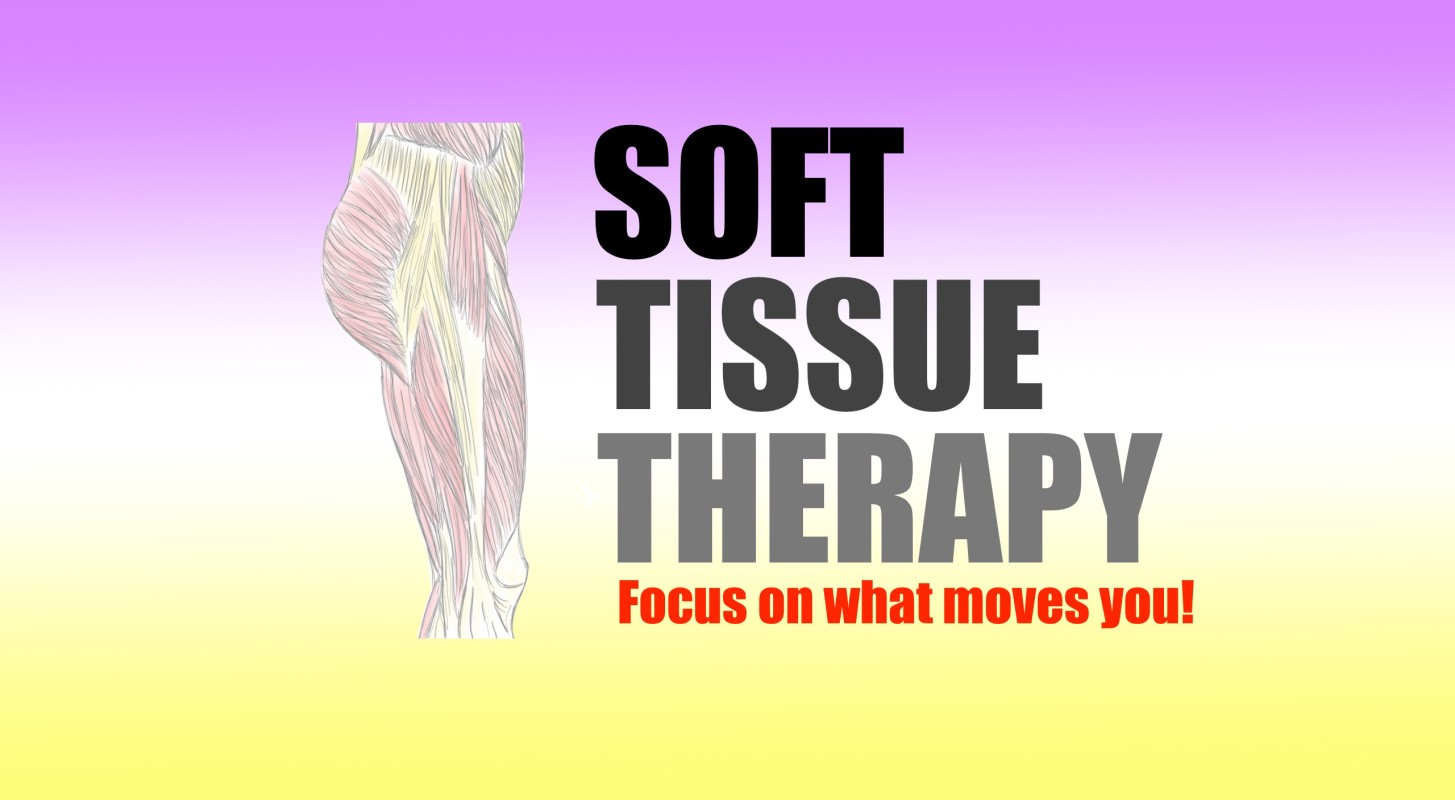
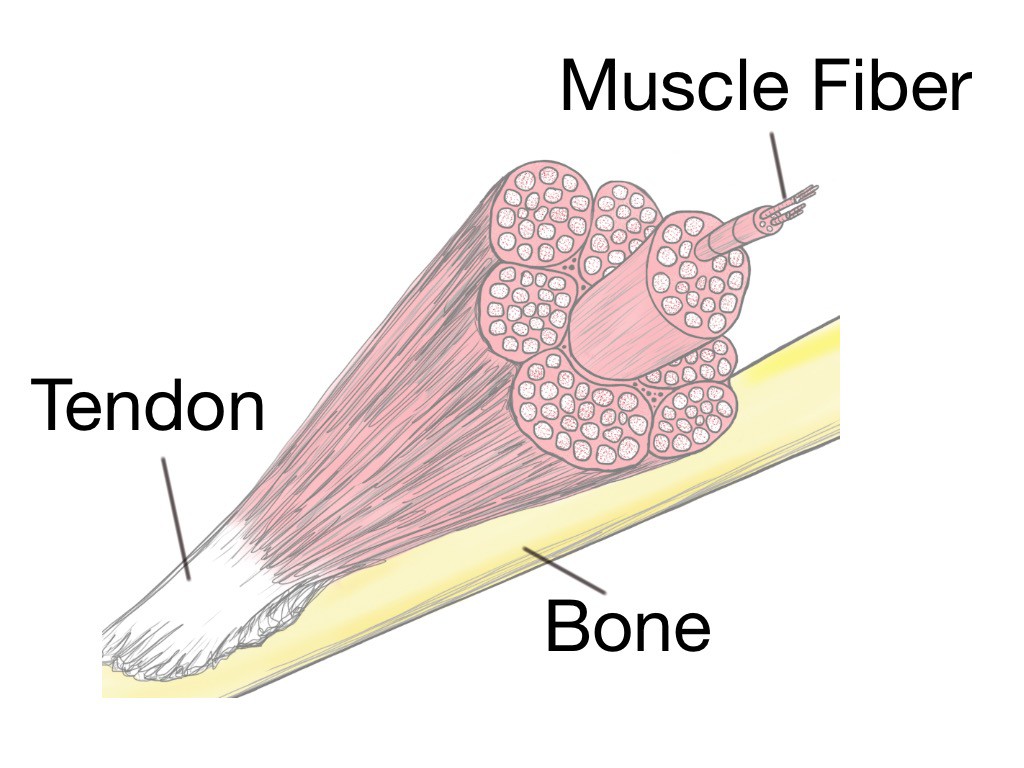
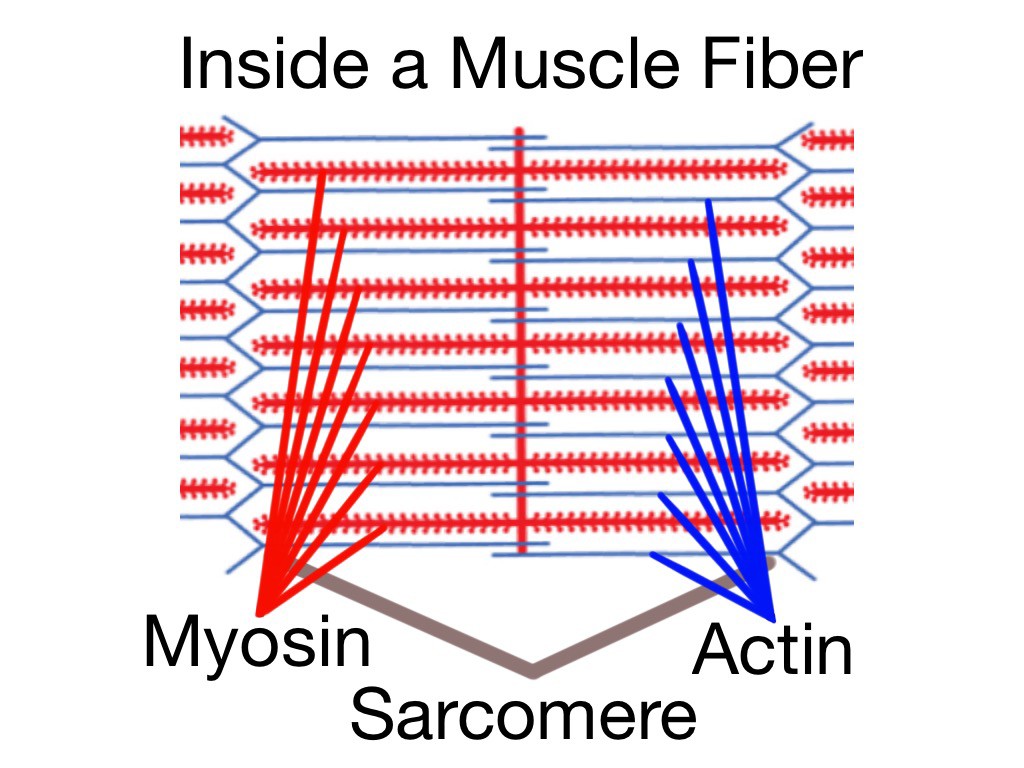
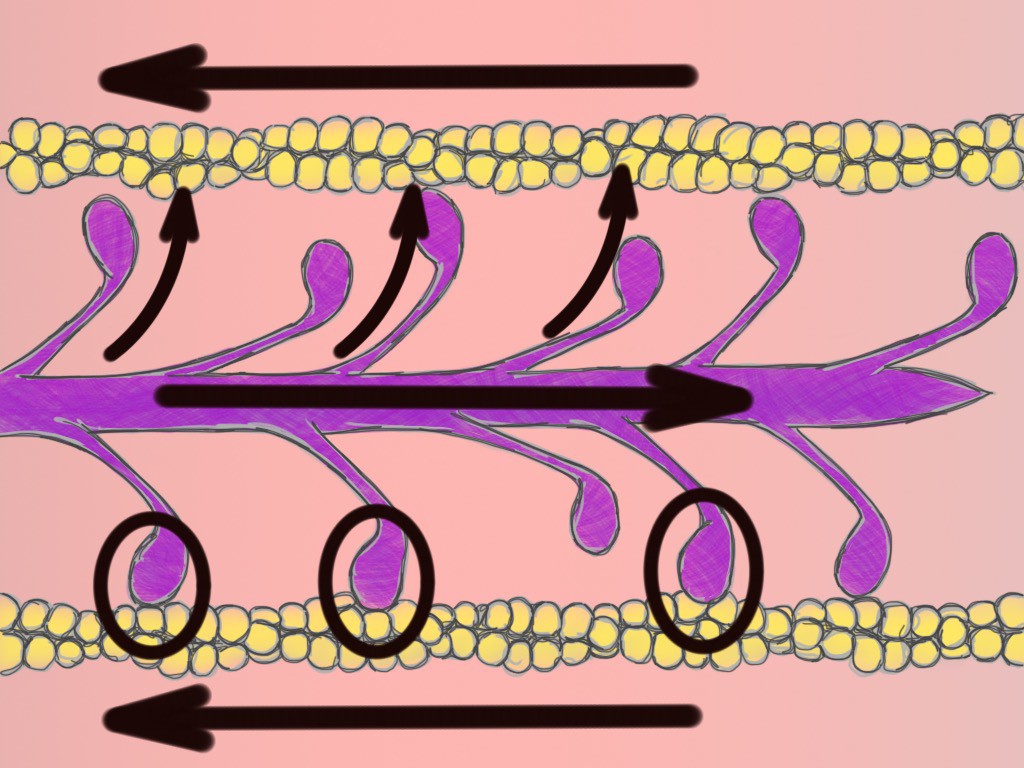
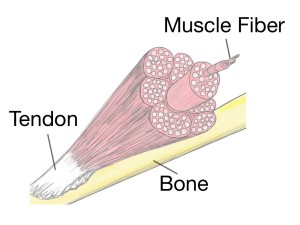
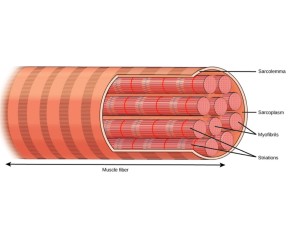
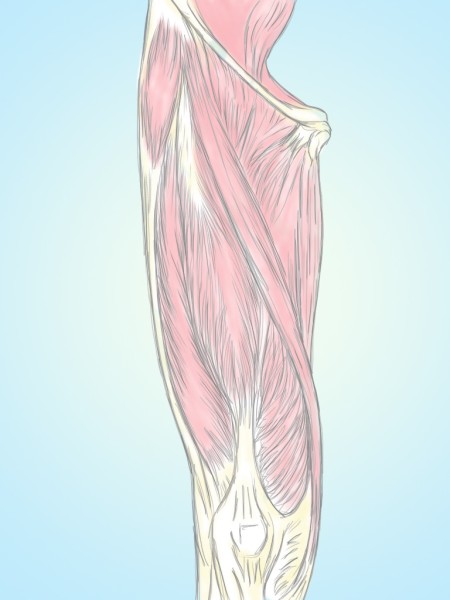
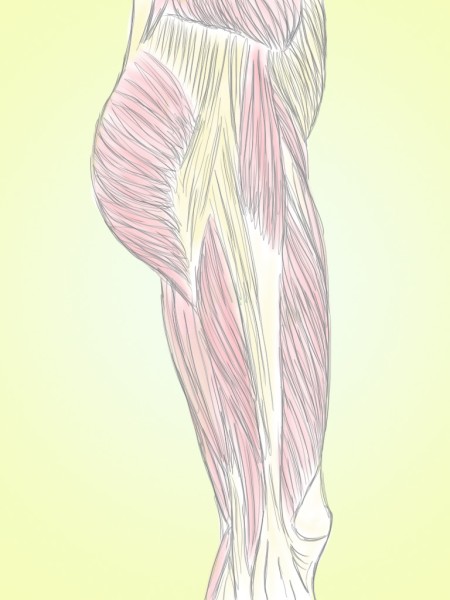
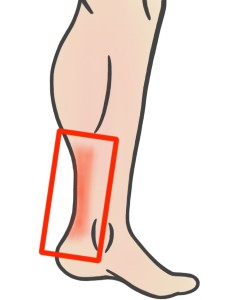
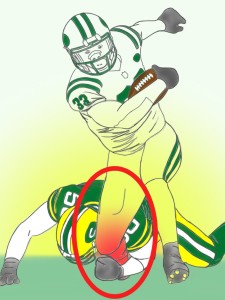
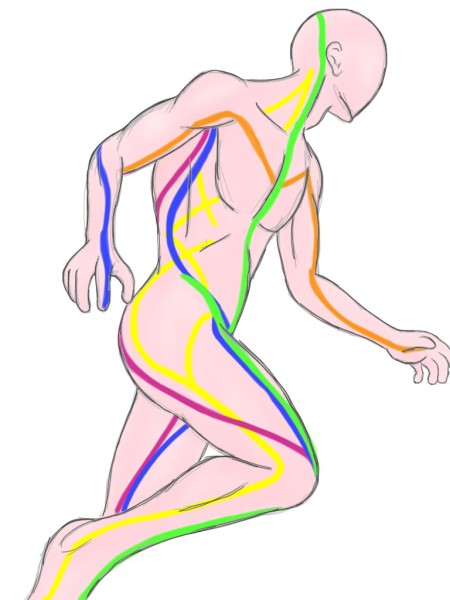
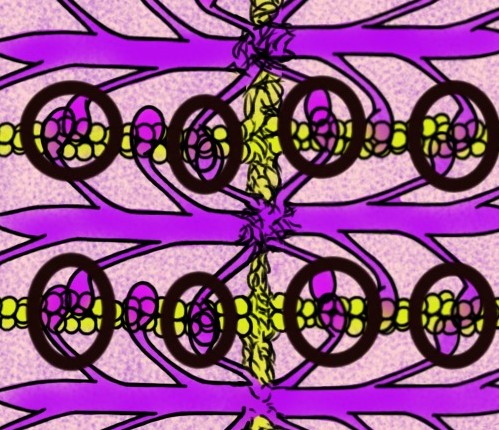
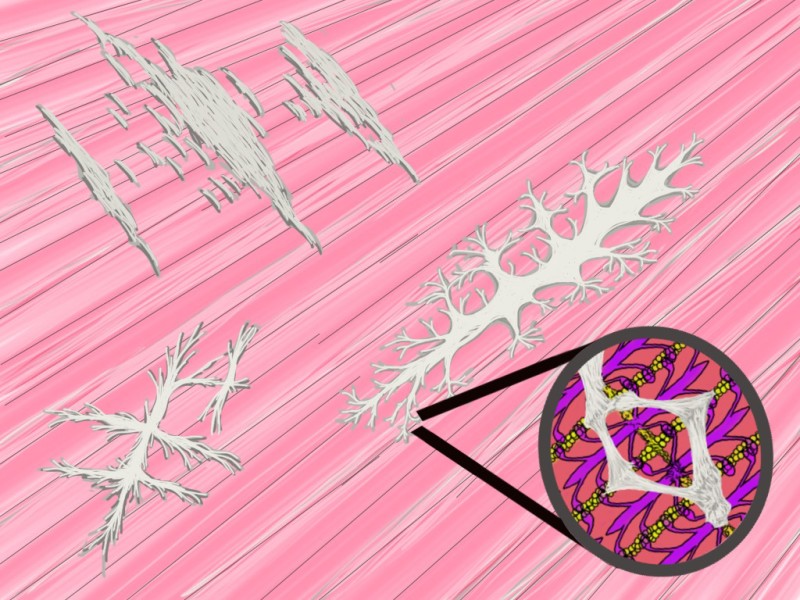
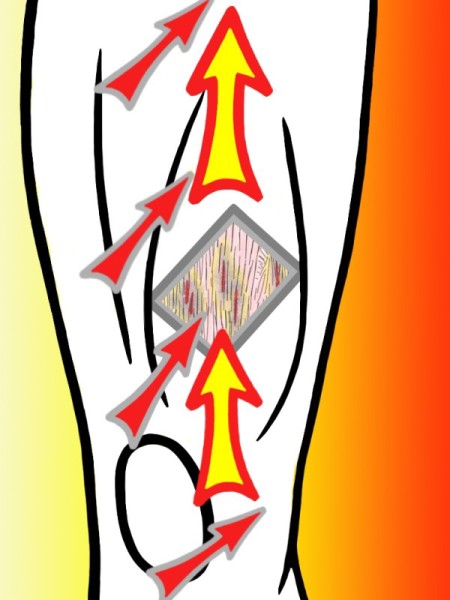
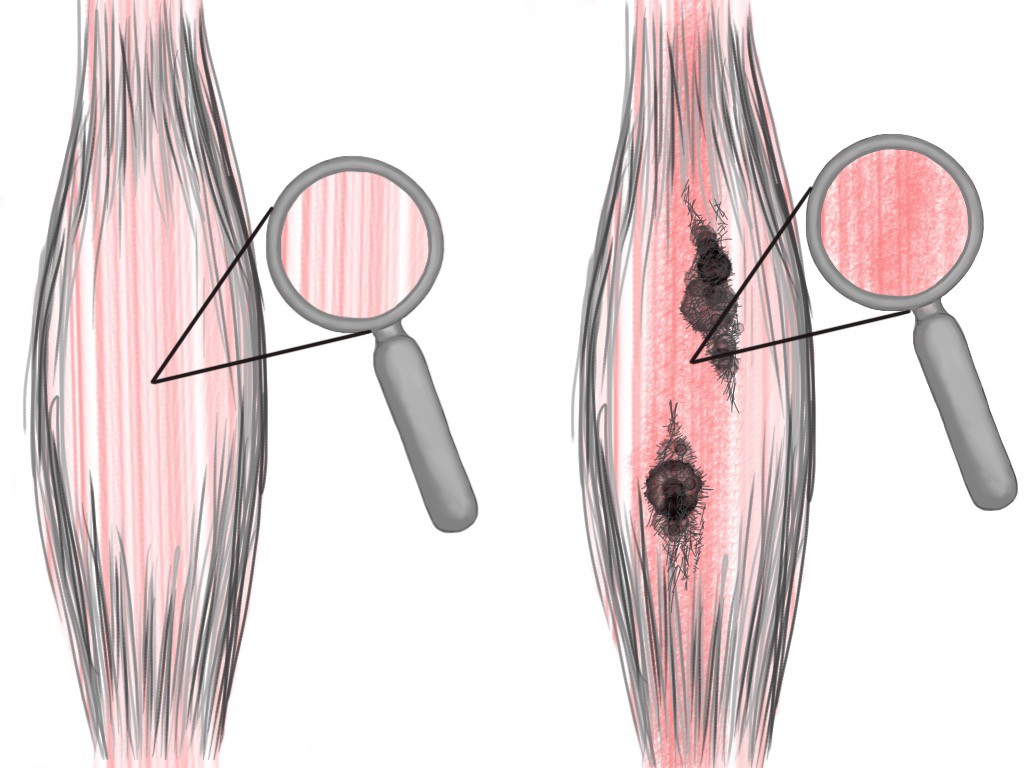
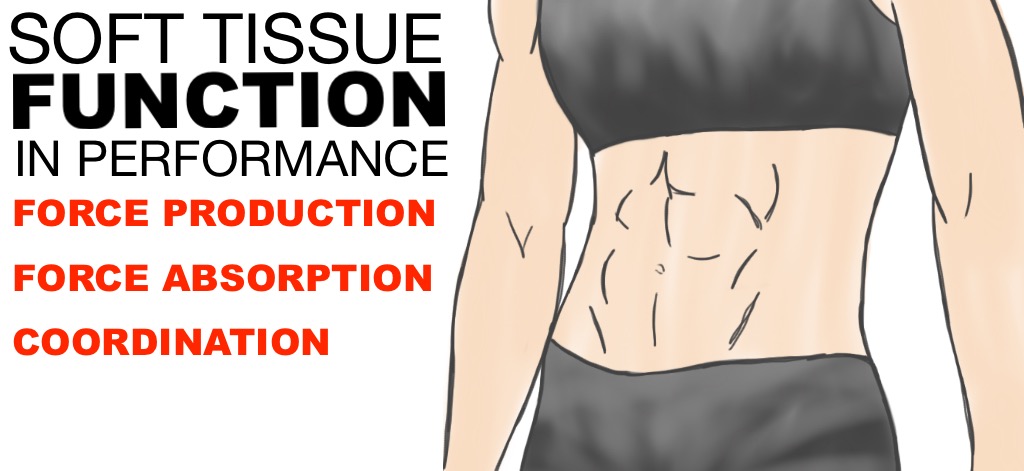
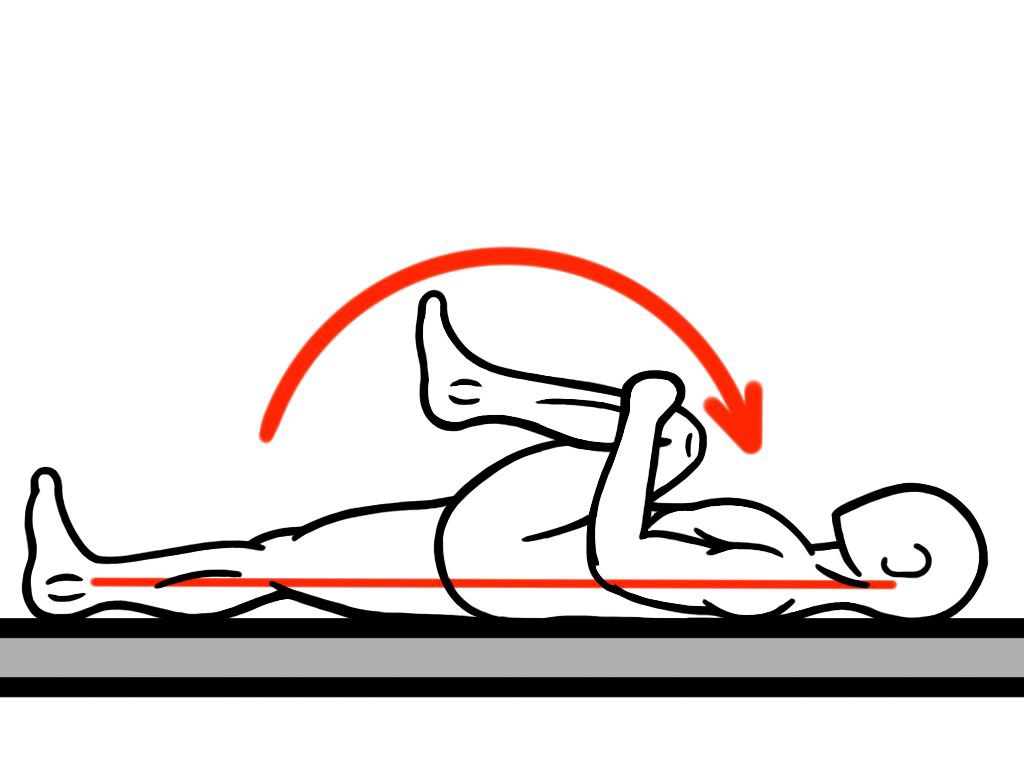
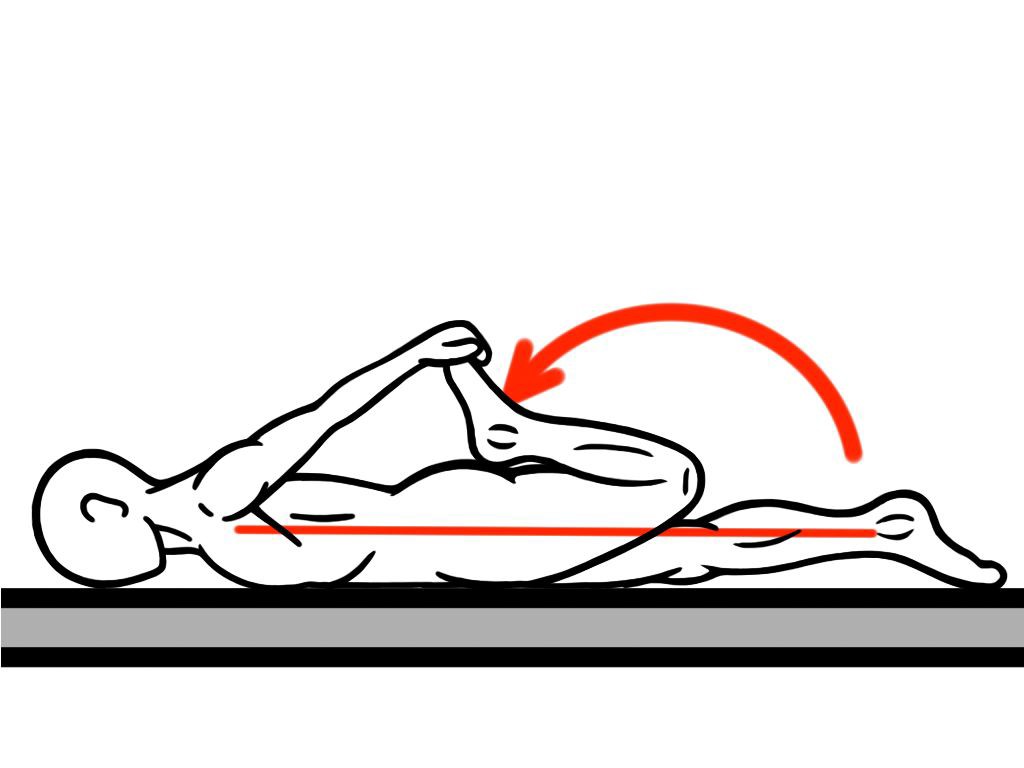
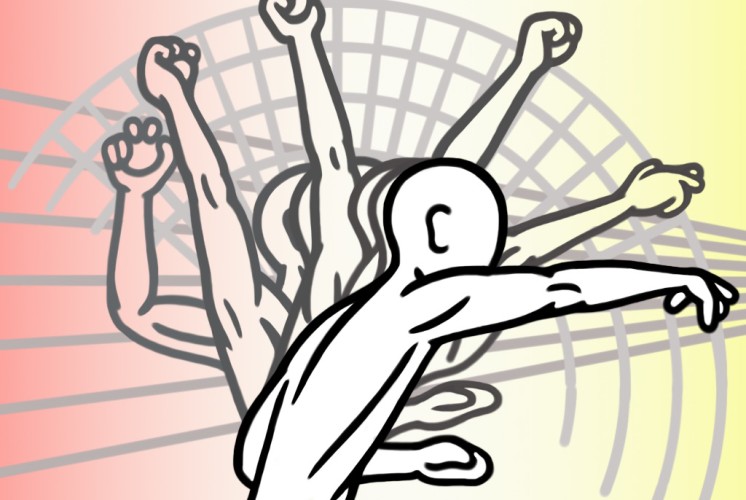
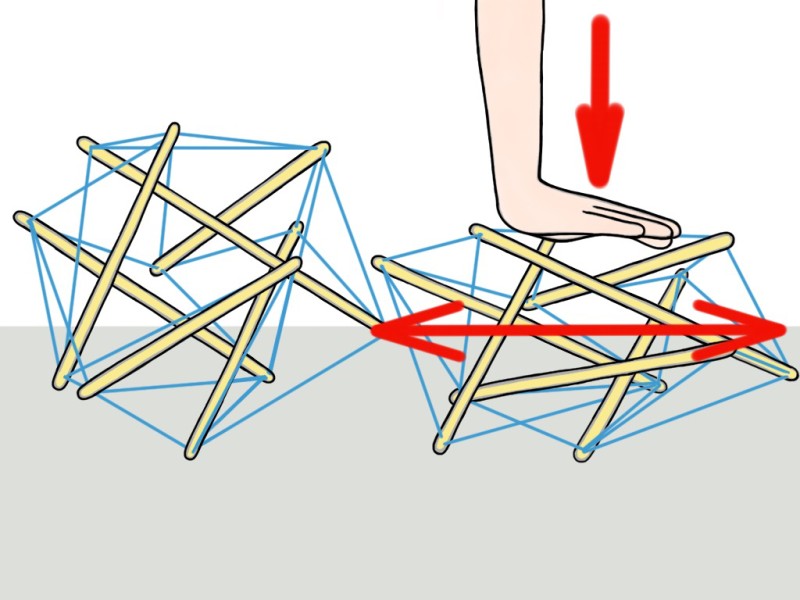
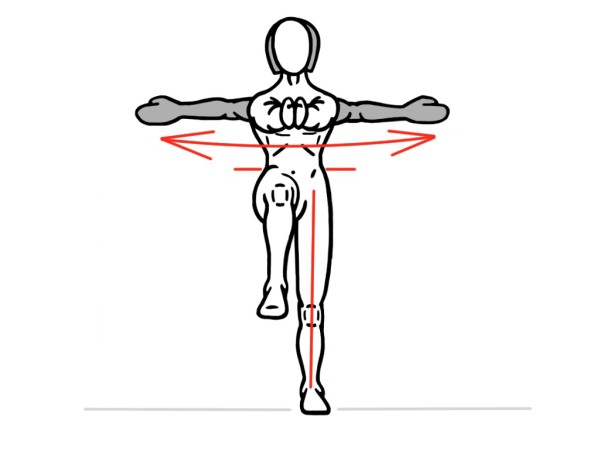
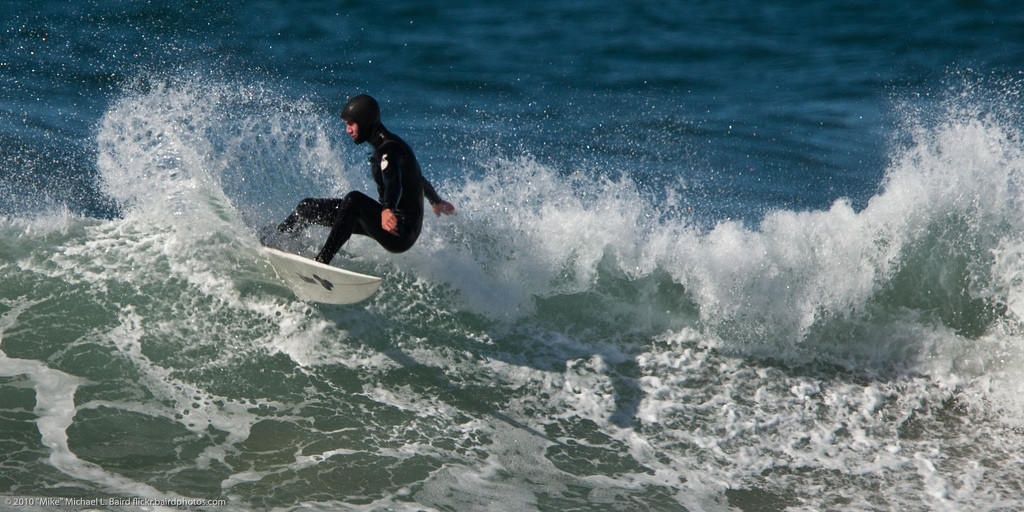
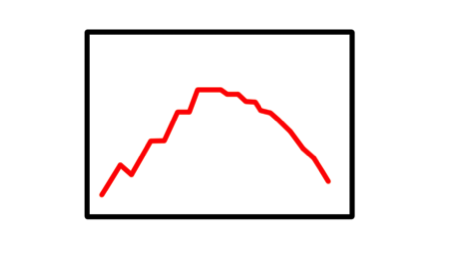
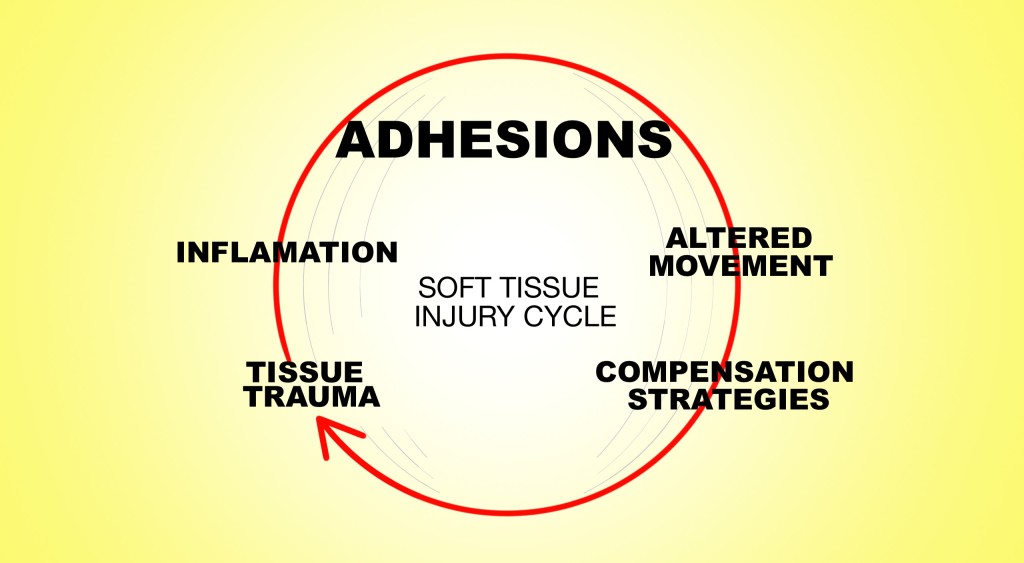
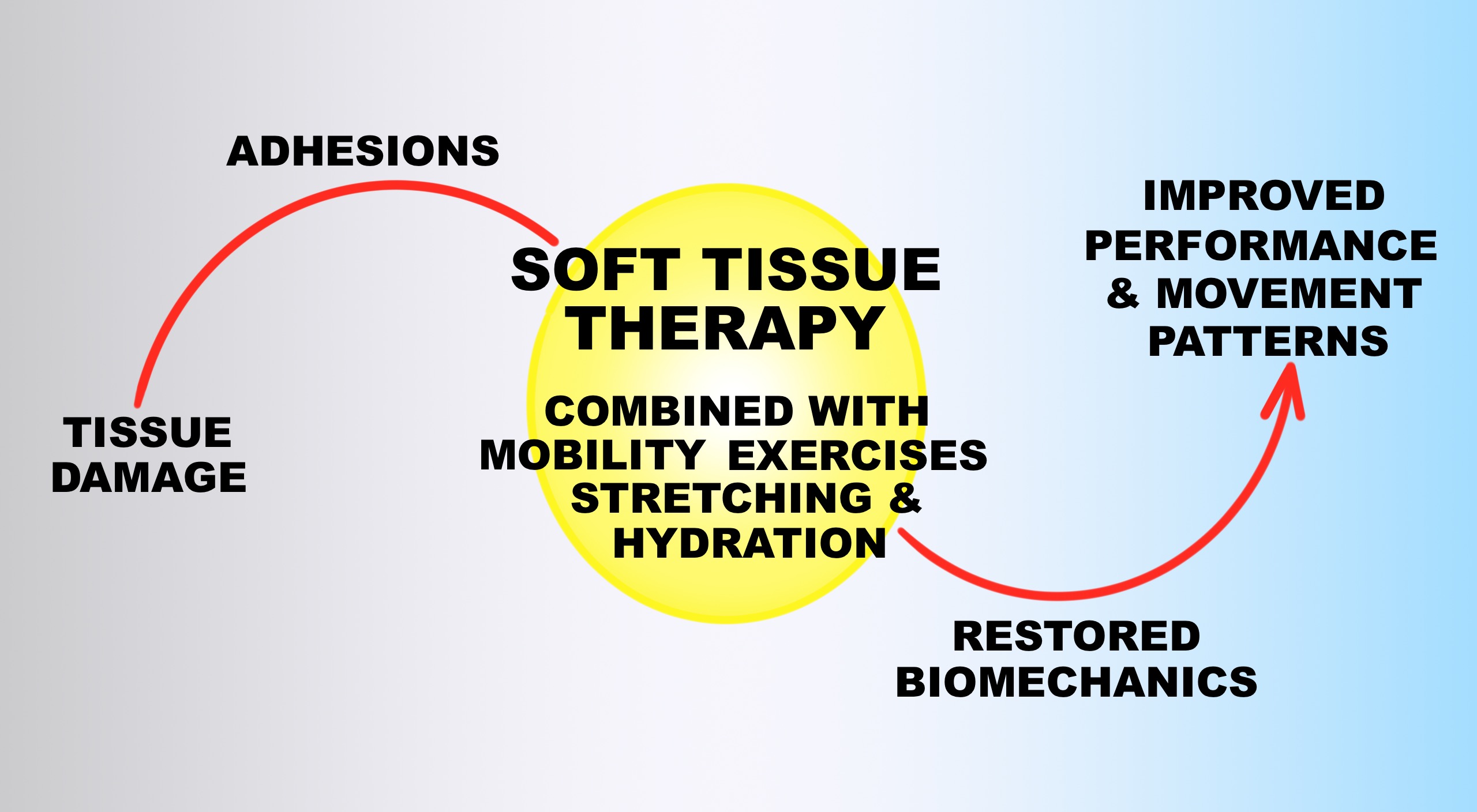
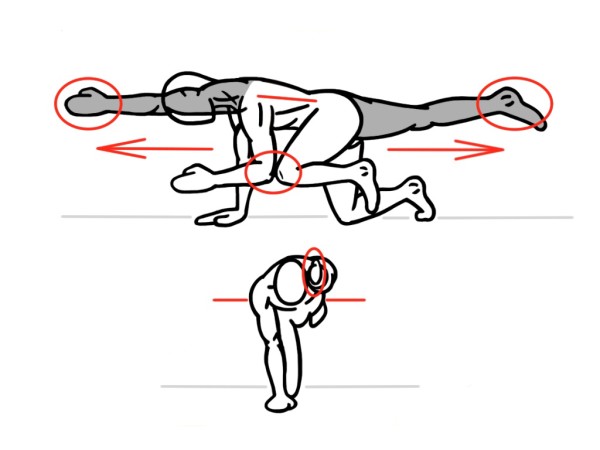
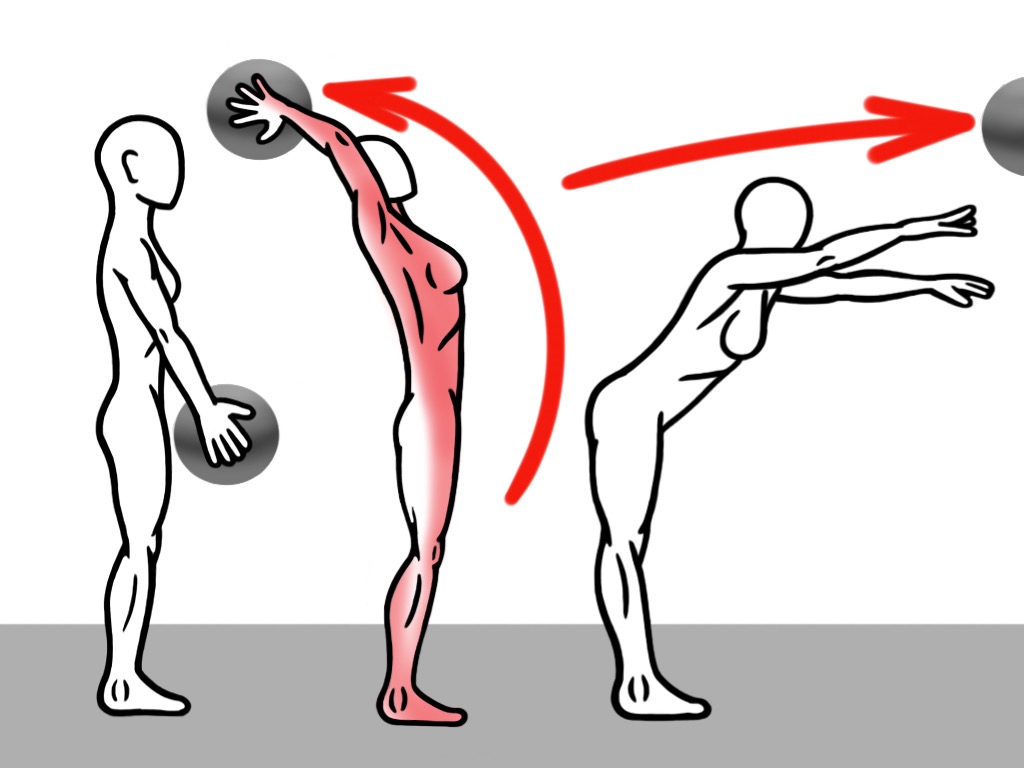
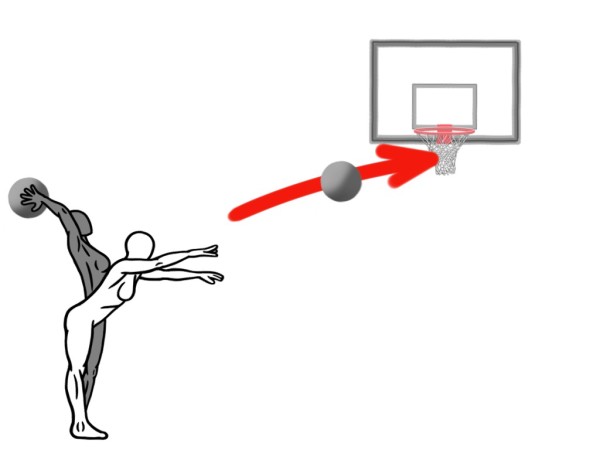
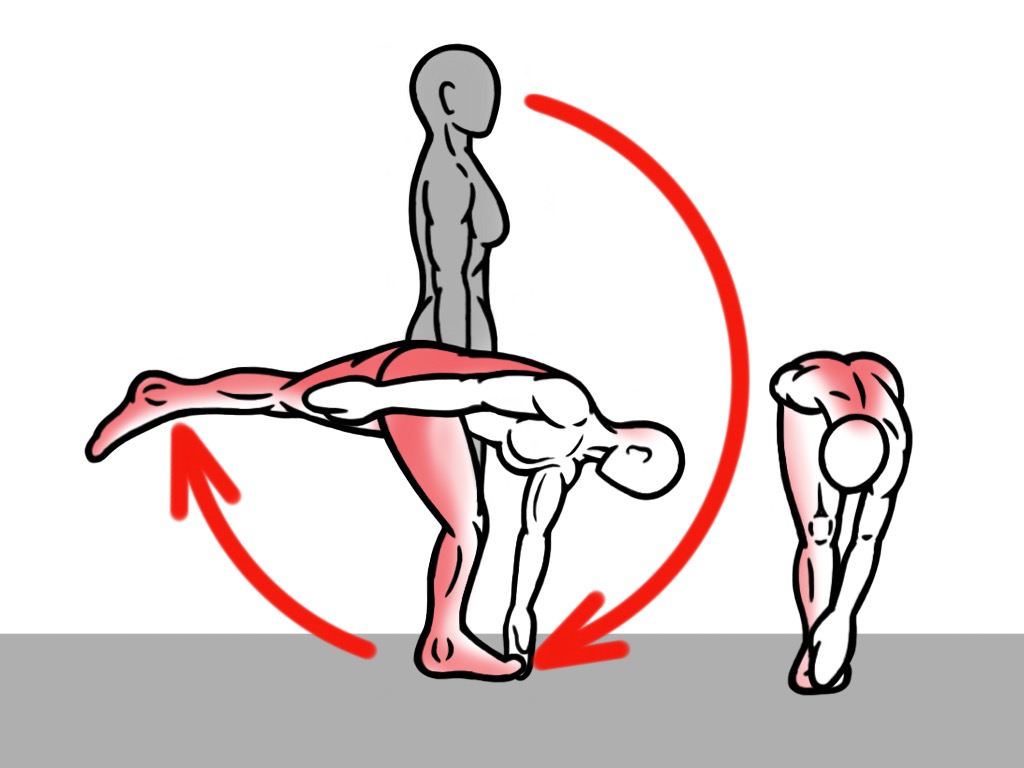
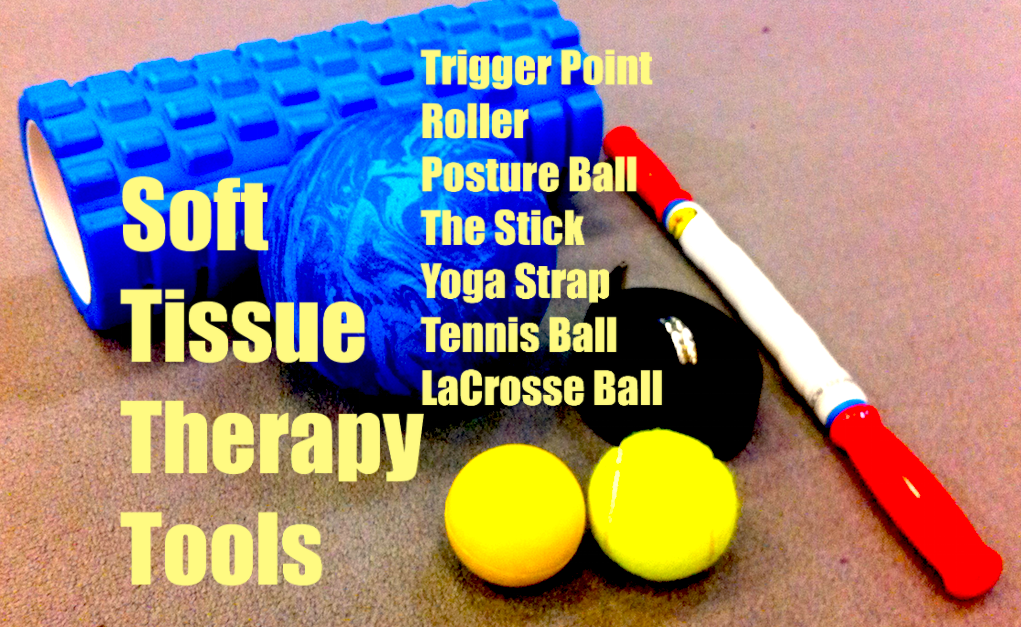
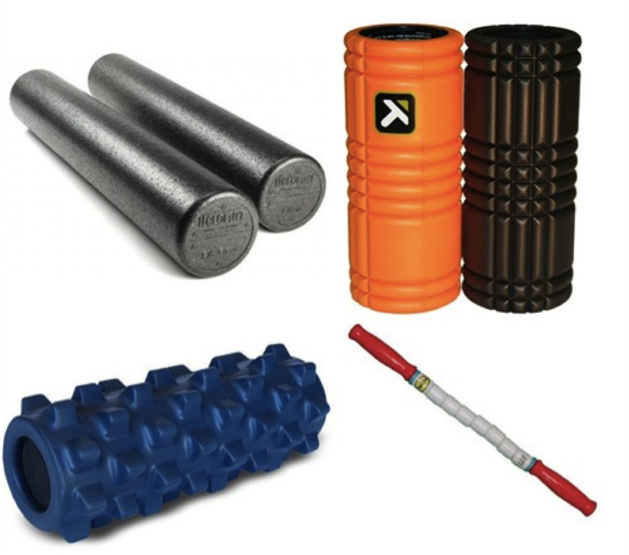
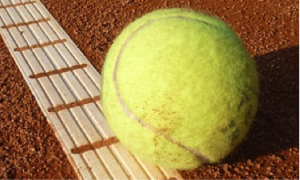
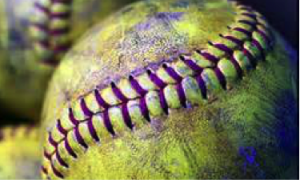
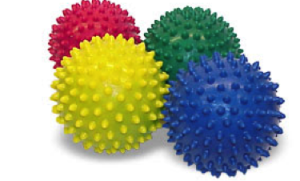

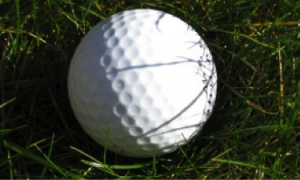
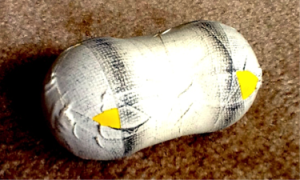
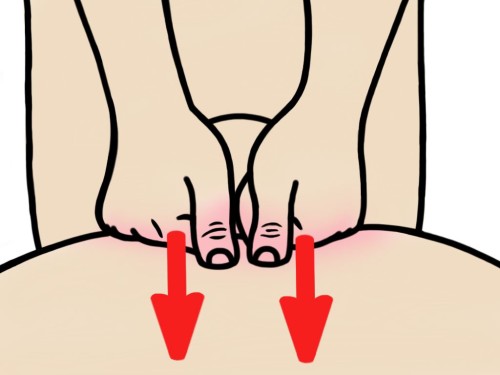
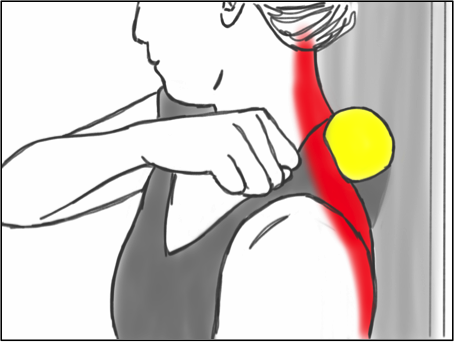
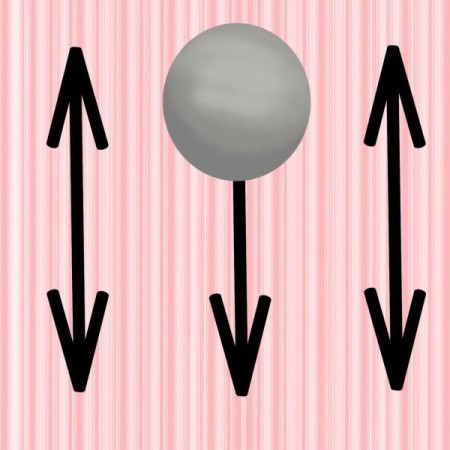
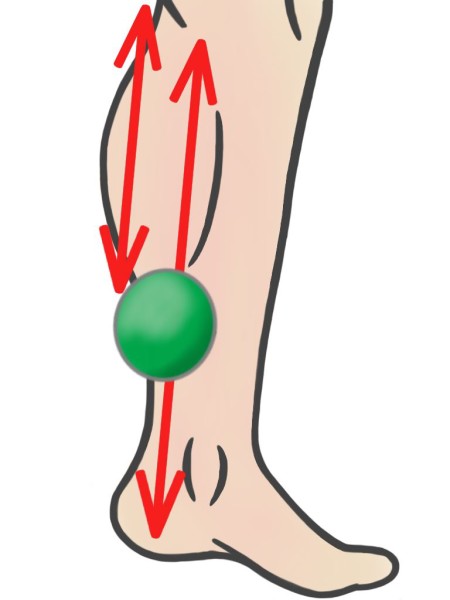

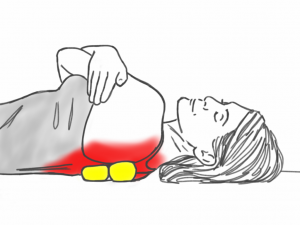
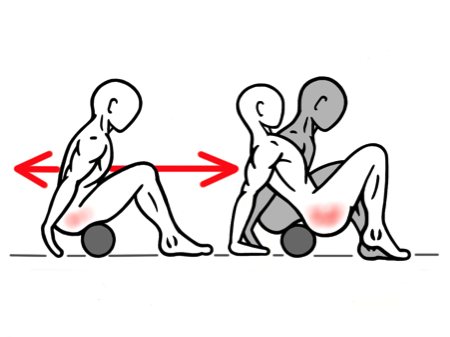
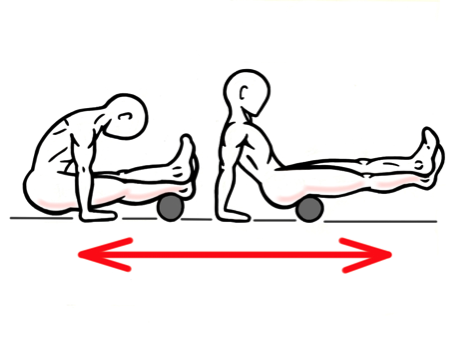
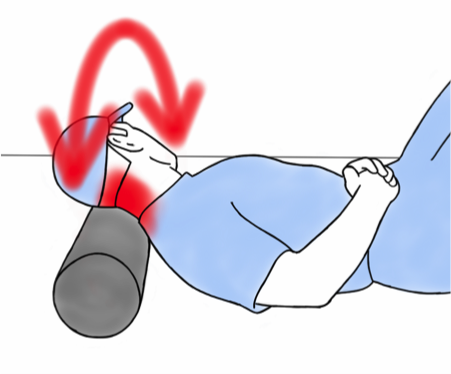
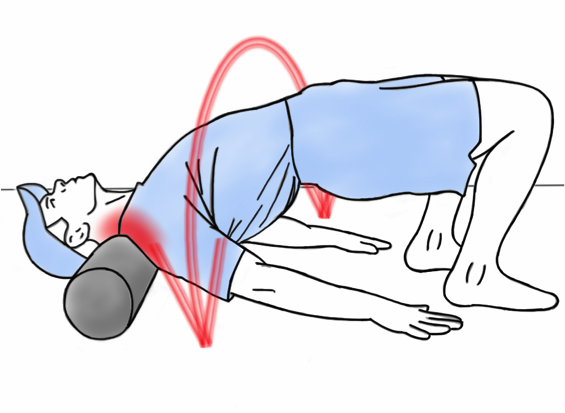
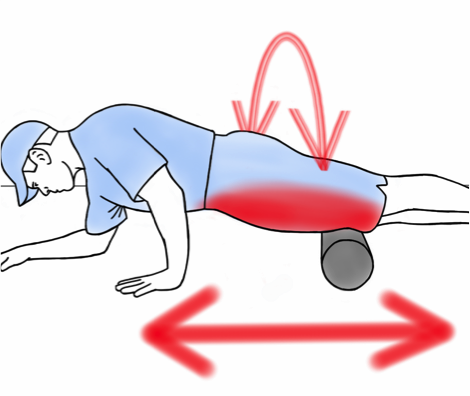
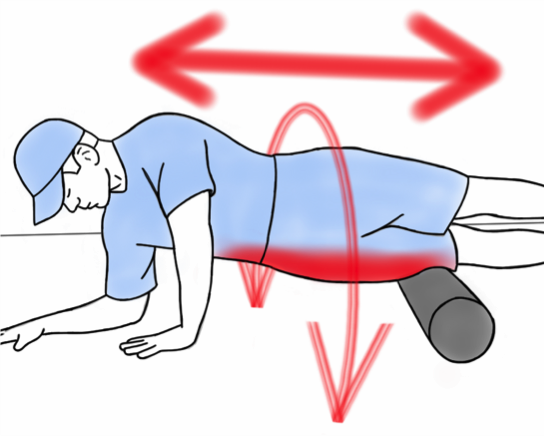
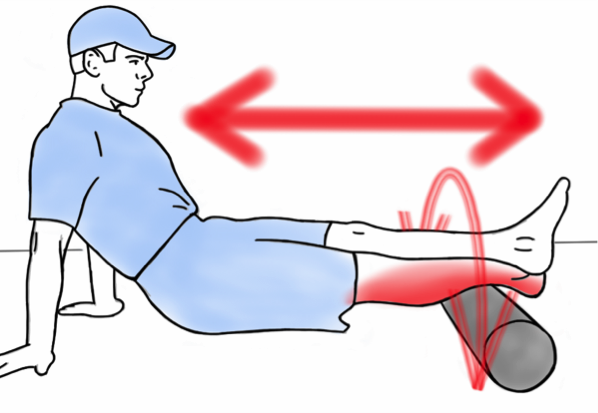
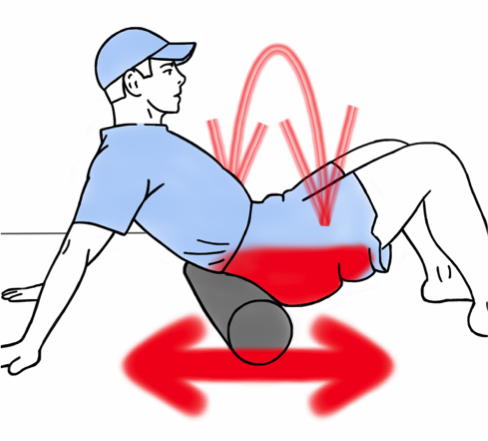
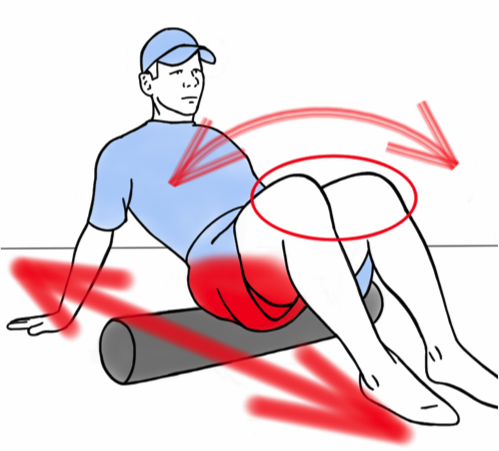

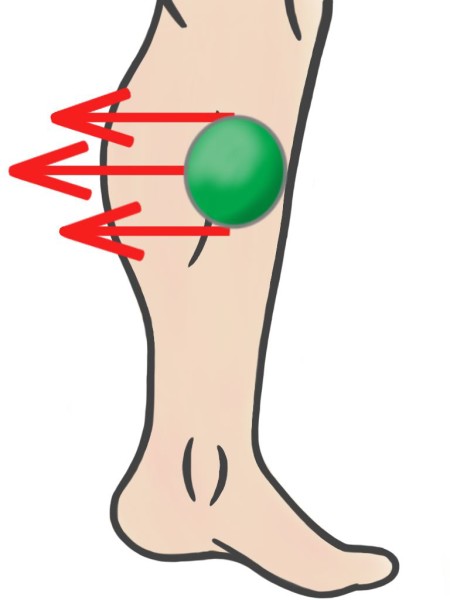
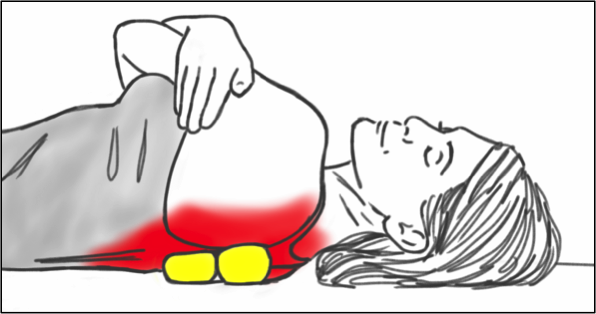
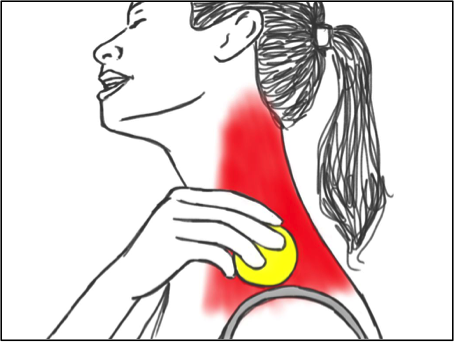
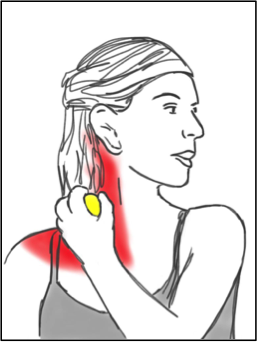
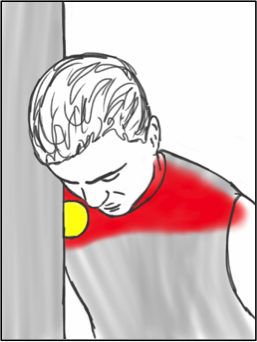
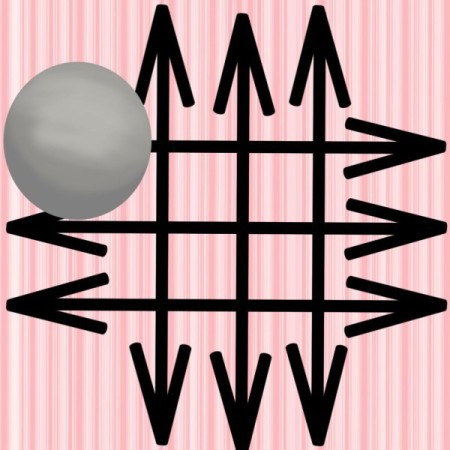
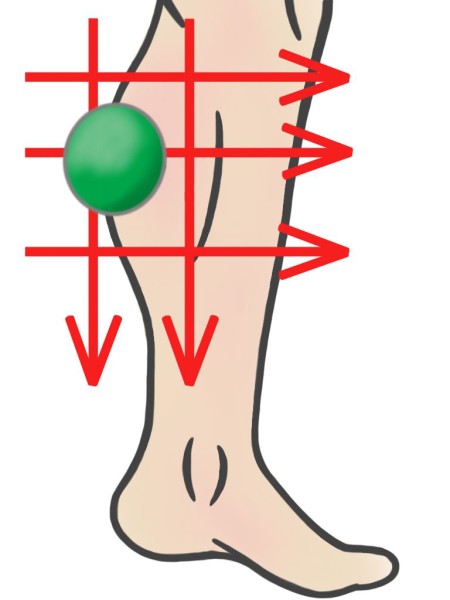
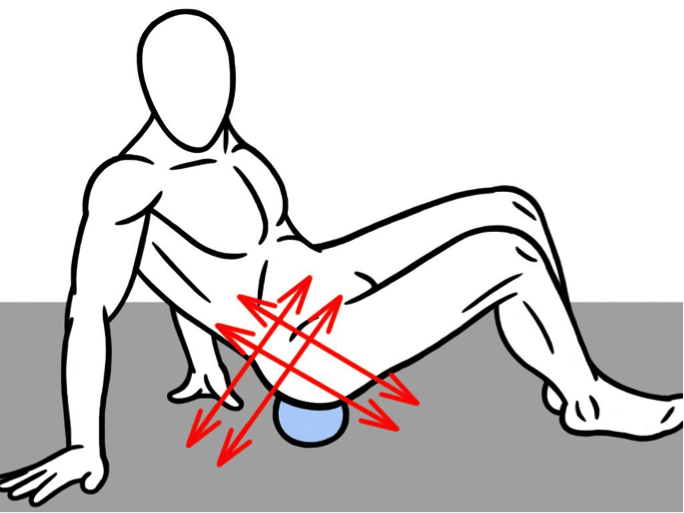
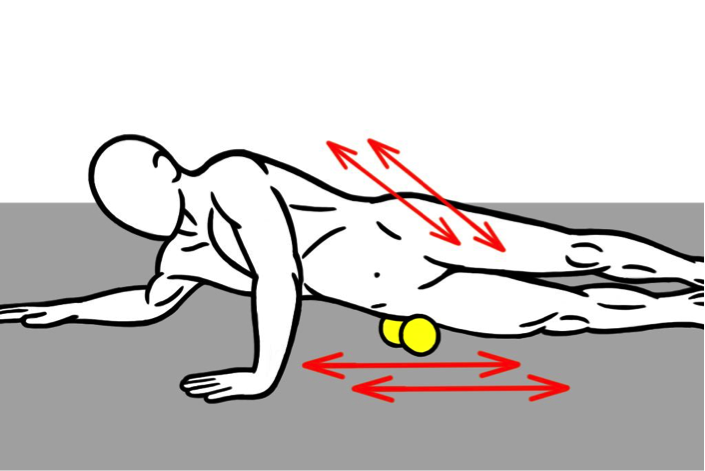
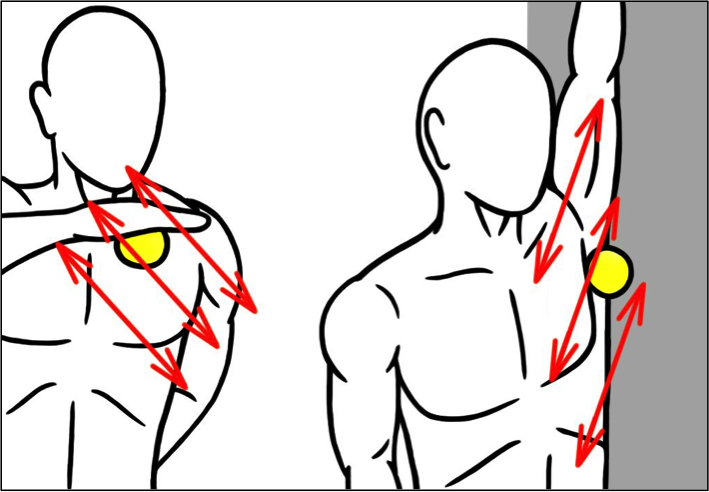
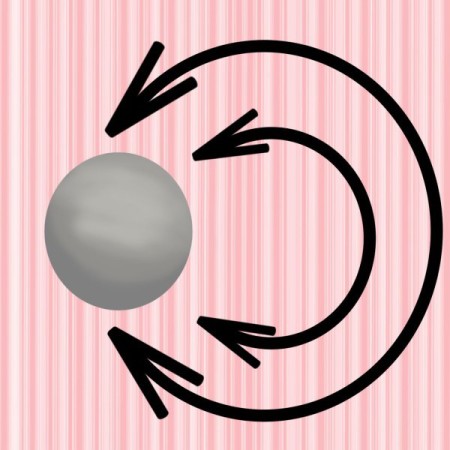
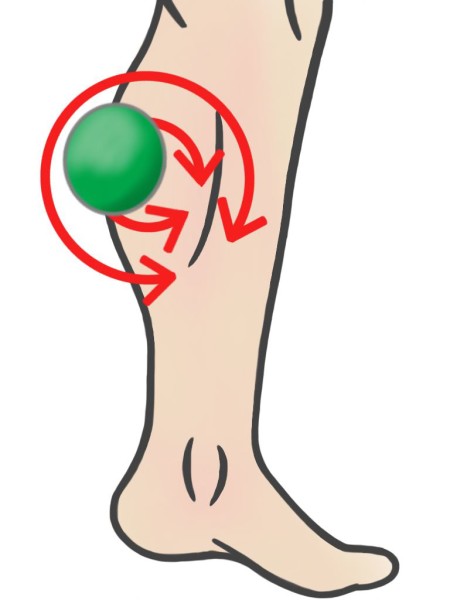
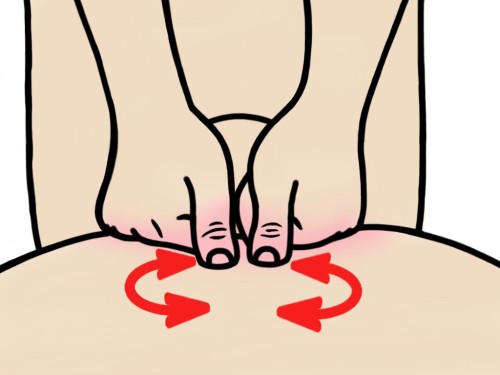
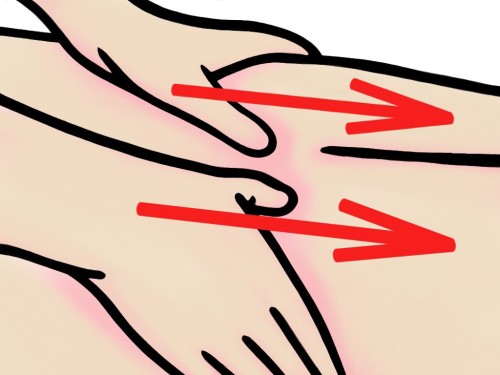
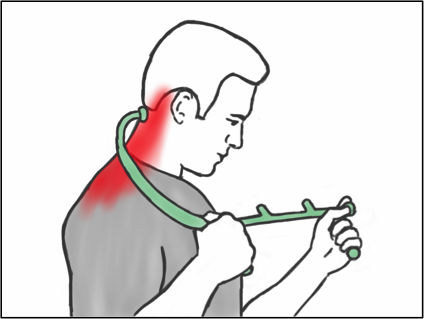
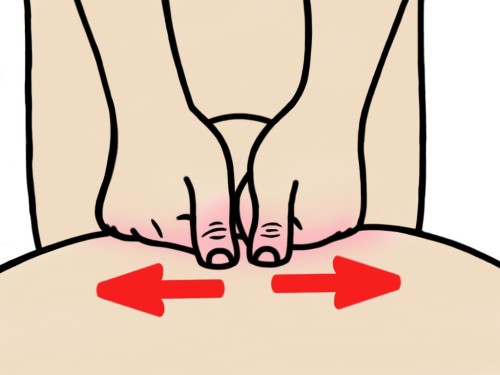
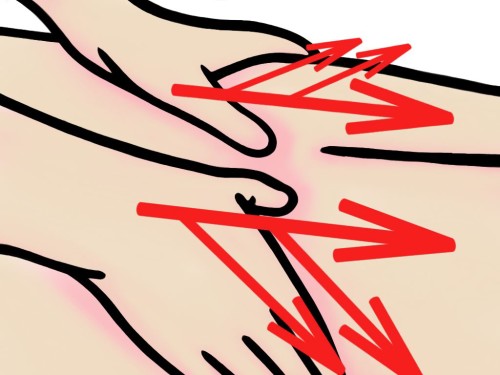
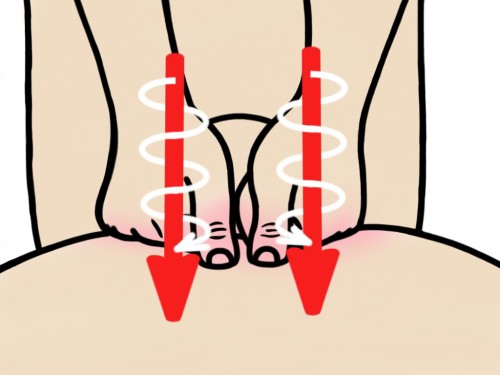
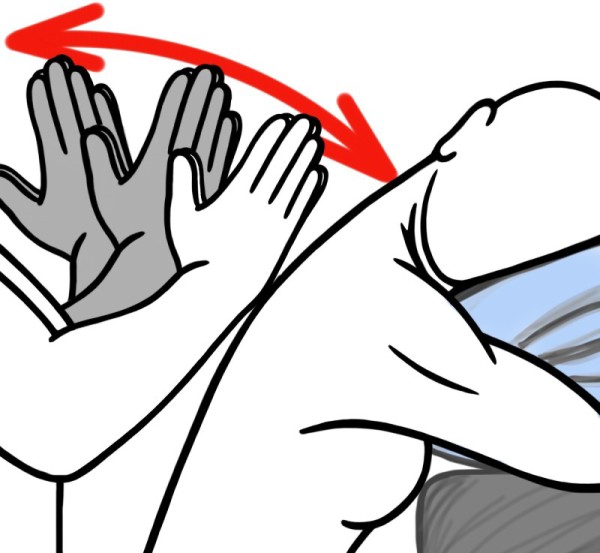
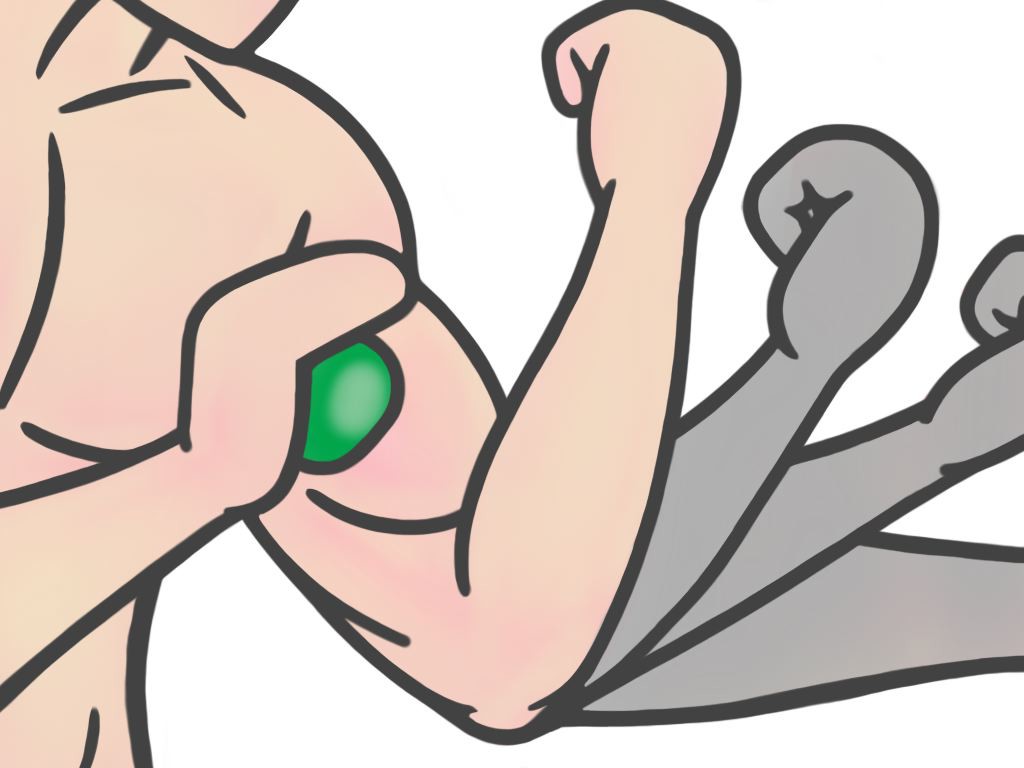
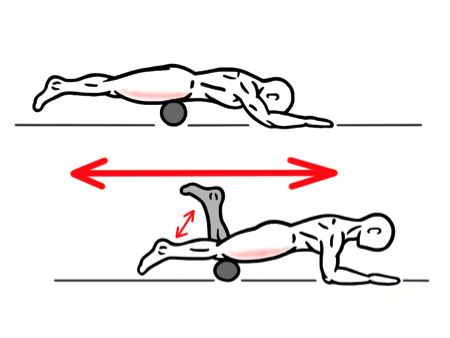
5 thoughts on “Soft Tissue Therapy – Explained”